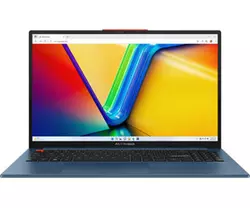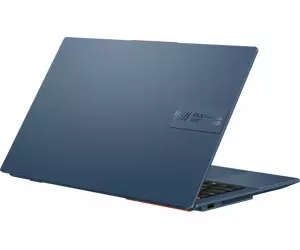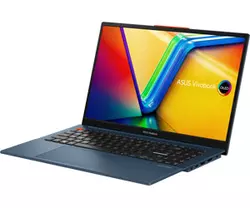The ASUS Vivobook S 15 OLED is a very good all-in-one laptop suitable for both work and play. It has a powerful 13th-generation Intel Raptor Lake H-series processor, discrete Intel ARC graphics, and efficient cooling that allows the system to operate stably under any load. The laptop also has such significant advantages as a bright OLED display with a high-quality picture, a comfortable keyboard with an additional number pad, and a loud audio system. We should also mention the very long battery life and fast charging. The laptop has a nice look, a metal lid, and meets the MIL-STD-810H endurance standard. However, there are still some minor complaints about the laptop, especially given its not-so-compact dimensions. There is no card reader, and USB 2.0 and HDMI 1.4 look strange in a modern laptop. Upgrade options are minimal: you can't increase the amount of RAM or install an additional drive.
6 reasons to buy ASUS Vivobook S 15 OLED (K5504VN):
- High performance
- Bright OLED display with high-quality picture
- Efficient cooling system
- Comfortable keyboard and touchpad
- Excellent battery life
- Stylish and sturdy body that meets the MIL-STD-810H standard
2 reasons not to buy ASUS Vivobook S 15 OLED (K5504VN):
- Not the most modern set of connectors: USB 2.0, HDMI 1.4
- Minimum upgrade options
A quick transition:
- What's in the box?
- What about the appearance and construction of the ASUS Vivobook S 15 OLED (K5504VN)?
- How user-friendly is the ASUS Vivobook S 15 OLED (K5504VN)?
- How good is the screen?
- What about performance and battery life?
- In the dry balance
What's in the box?
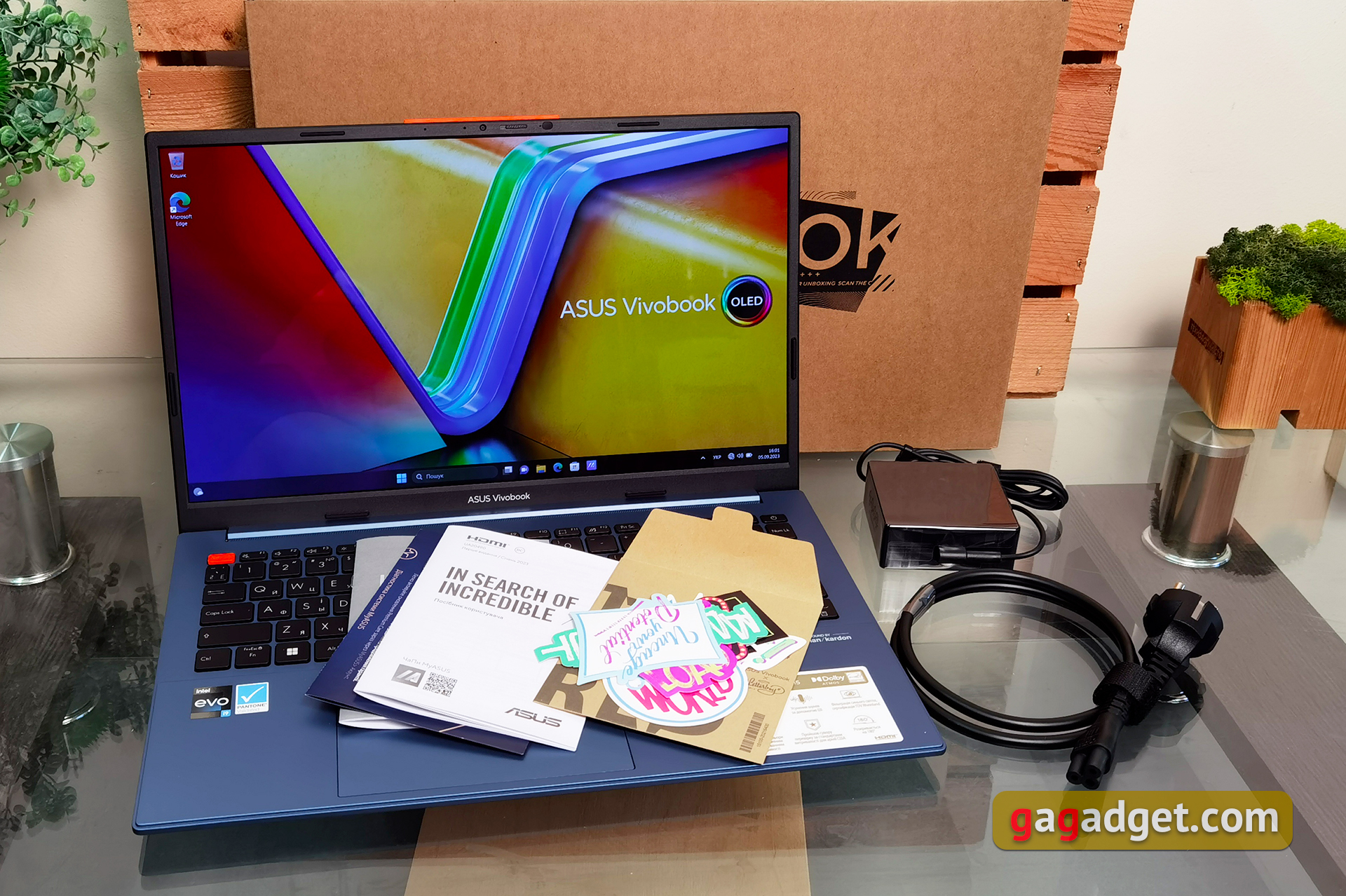
ASUS Vivobook S 15 OLED is packed in a plain mustard-coloured cardboard box with the model name and basic information. Inside is a laptop, a 90W power supply, a power cable, documentation and a set of stickers. ASUS often offers to use part of the packaging as a stand. This is the case here as well: the inside of the box is perforated for this purpose. You can cut it off and fold it into a stand that will be useful for both using and storing the laptop in an upright position:
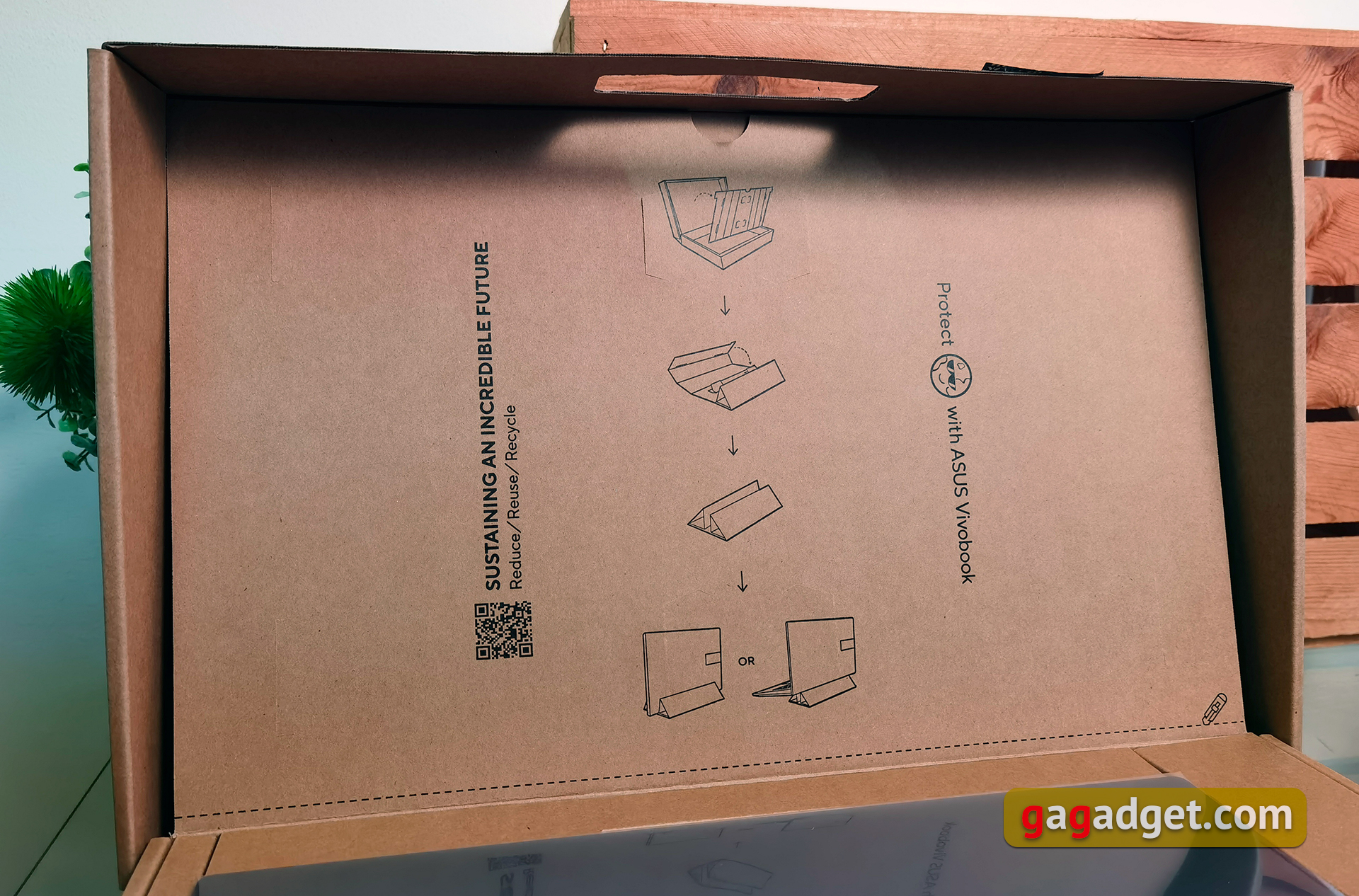
What about the appearance and construction of the ASUS Vivobook S 15 OLED (K5504VN)?
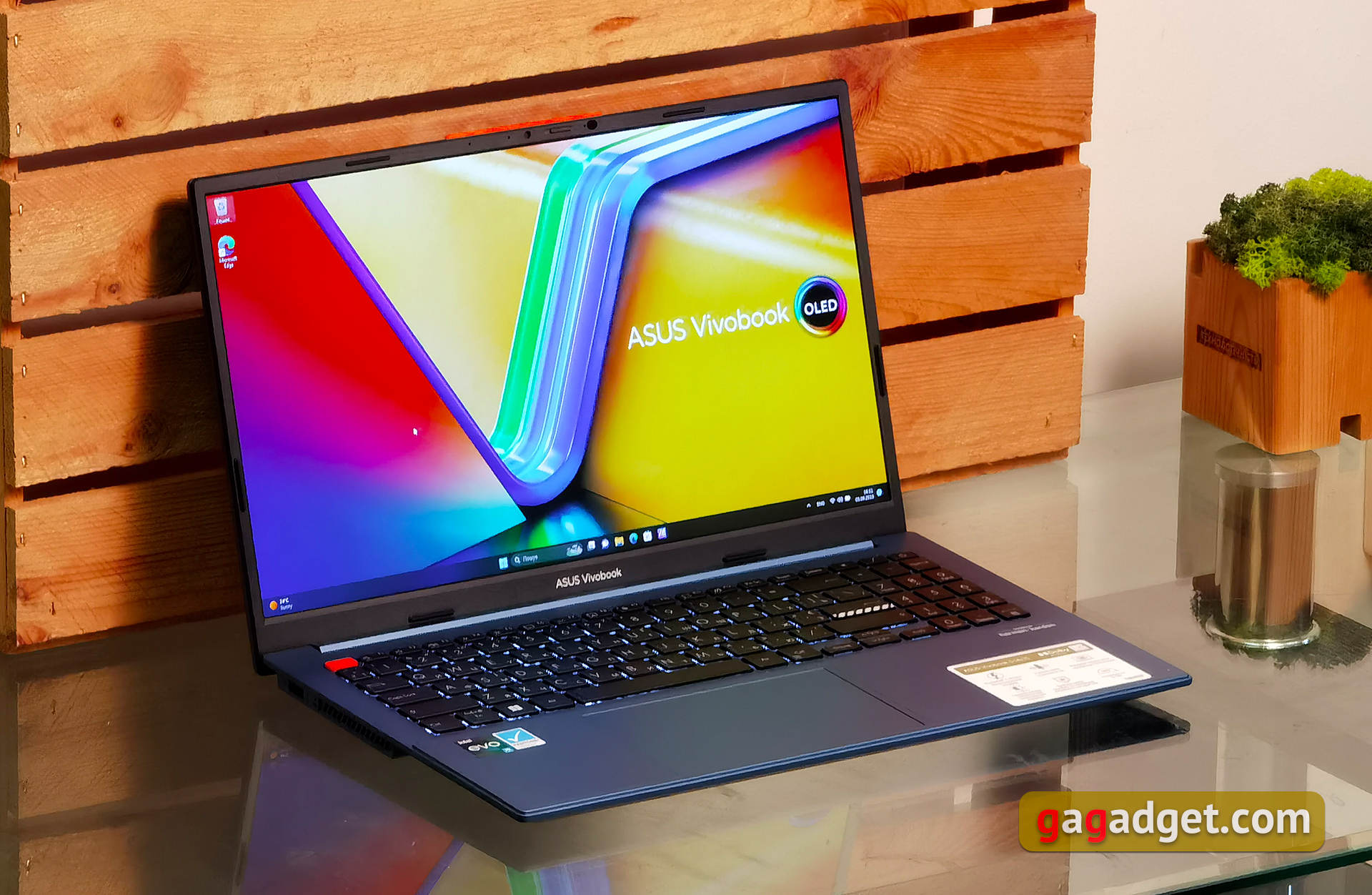
Vivobook is a more affordable laptop line compared to Zenbook or ROG, so the materials are a bit simpler. The top lid is made of aluminium, the rest is plastic. The laptops are available in four colours: silver, cream, black and blue with interesting bright accents. The design is pleasant and restrained. The logo on the top lid is engraved on a small protruding panel. The lid and all plastic surfaces have a matte finish and do not collect fingerprints.

All the ports are located on the sides and there are not too many of them. On the left there are ventilation holes, two LED indicators and a no longer very relevant USB Type-A version 2.0. It looks a little strange, but it will do for connecting peripherals.

On the right are a combined 3.5 mm audio jack, HDMI 1.4, USB 3.2 Gen 1 Type-A, a power supply jack, and USB Type-C (Thunderbolt 4, 40 Gbps with Display Port and Power Delivery). The laptop can also be powered by 100W Type-C units. Considering the dimensions, the set of connectors is not impressive. A card reader would have been quite useful. And the HDMI 1.4 and USB 2.0 ports look a bit strange.

On the back there is a massive hinge that takes up most of the width of the case and an engraving with the name of the laptop line.

Instead of the usual cutout for opening the laptop, the ASUS Vivobook S 15 OLED has a bright orange protrusion on the top lid.
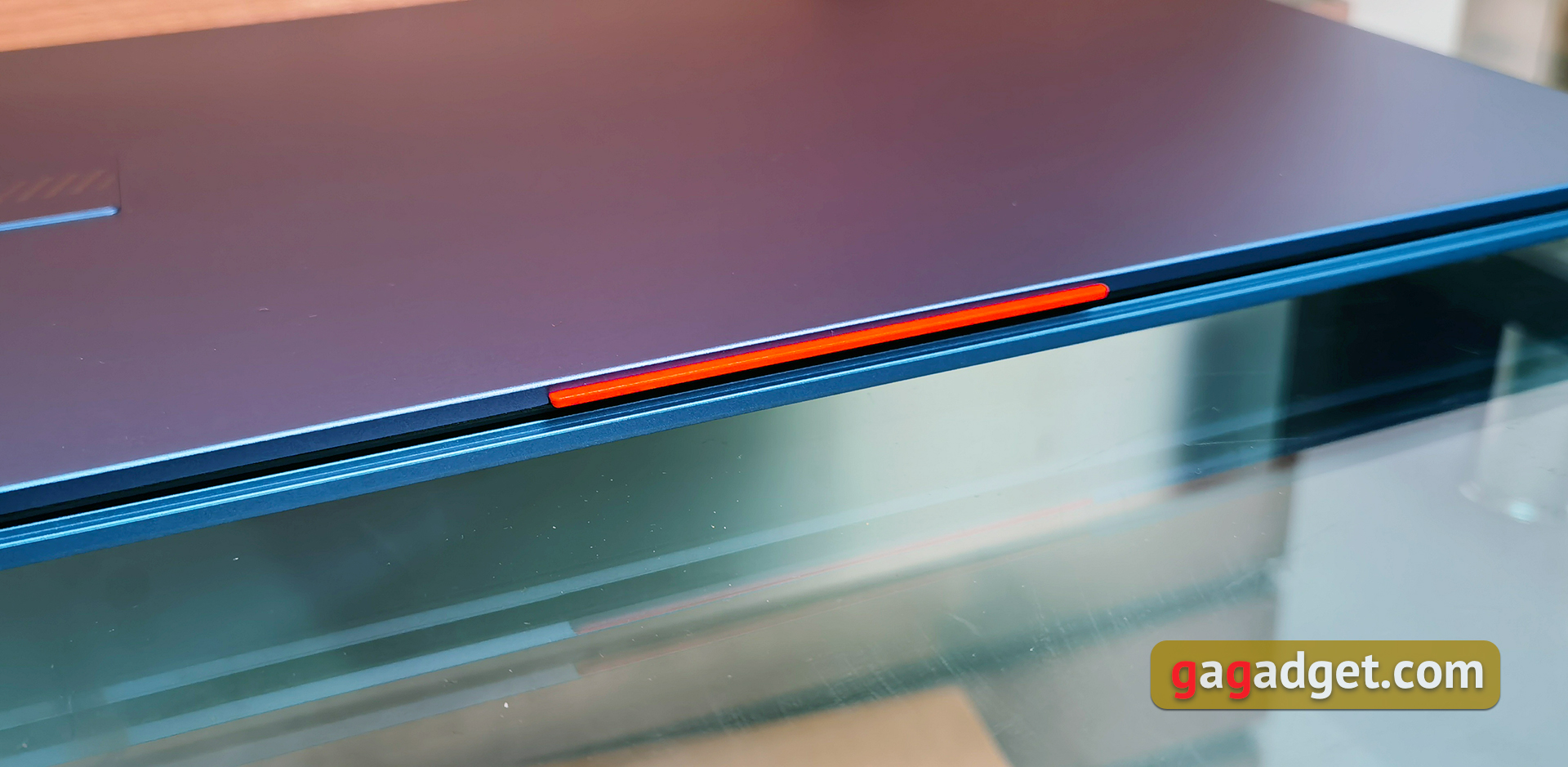
There are rubber inserts around the perimeter of the display unit. Above the screen is a FullHD webcam with a mechanical shutter. It supports ASUS 3D Noise Reduction (3DNR) real-time three-dimensional noise reduction technology, background blurring and brightness correction. In addition, there are two microphones, a camera indicator, and a light sensor for automatic brightness adjustment.
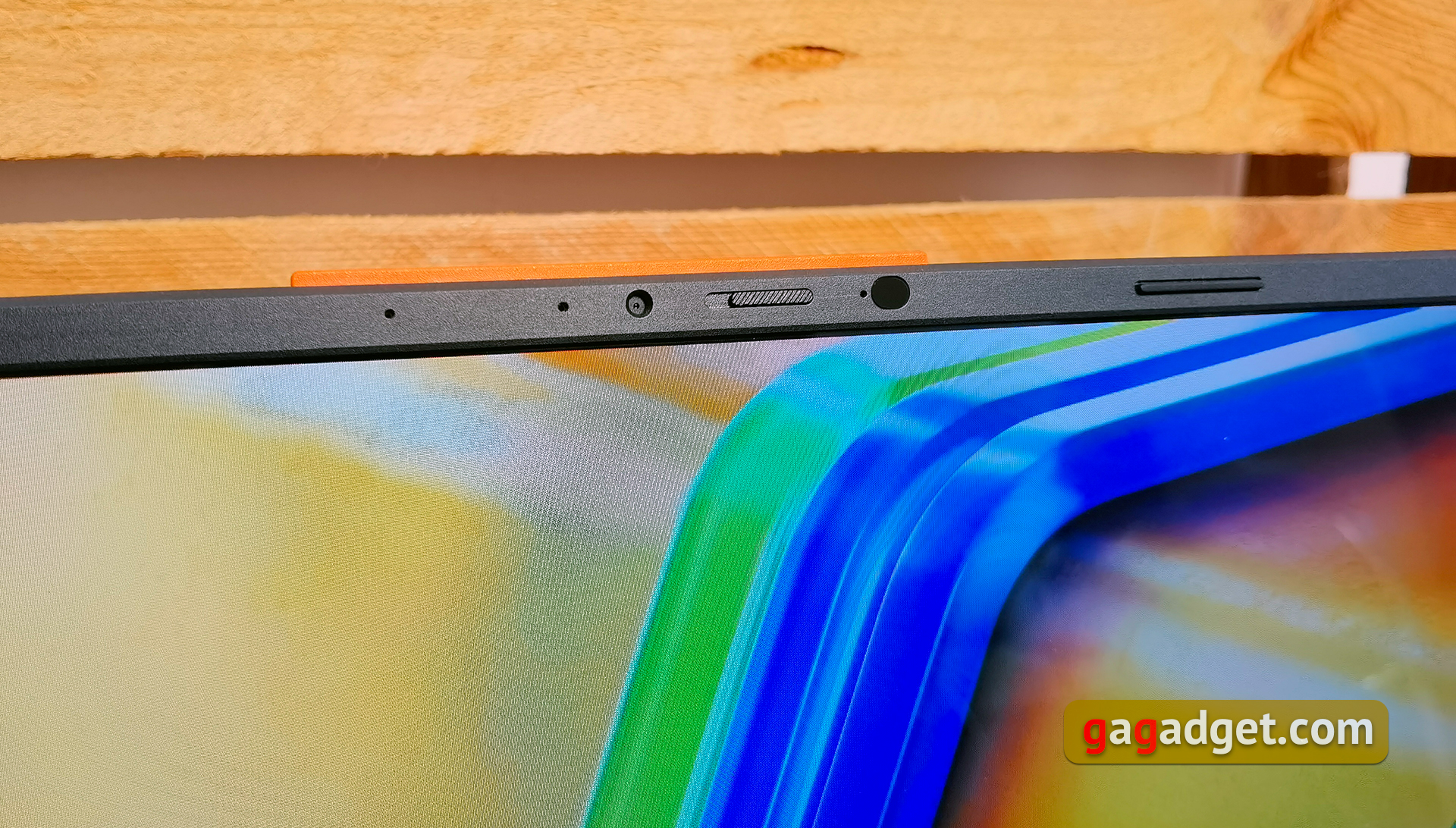
At the corners of the bottom lid are four rubber feet of various shapes for good fixation of the laptop on the table. There are plenty of ventilation holes and stereo speakers pointing downwards. The lid is fixed with ten Torx screws. It can be removed without any problems, but only the drive and network adapter can be replaced. There are no connectors for an additional drive or RAM. Although the case is not the most compact and there is room for more
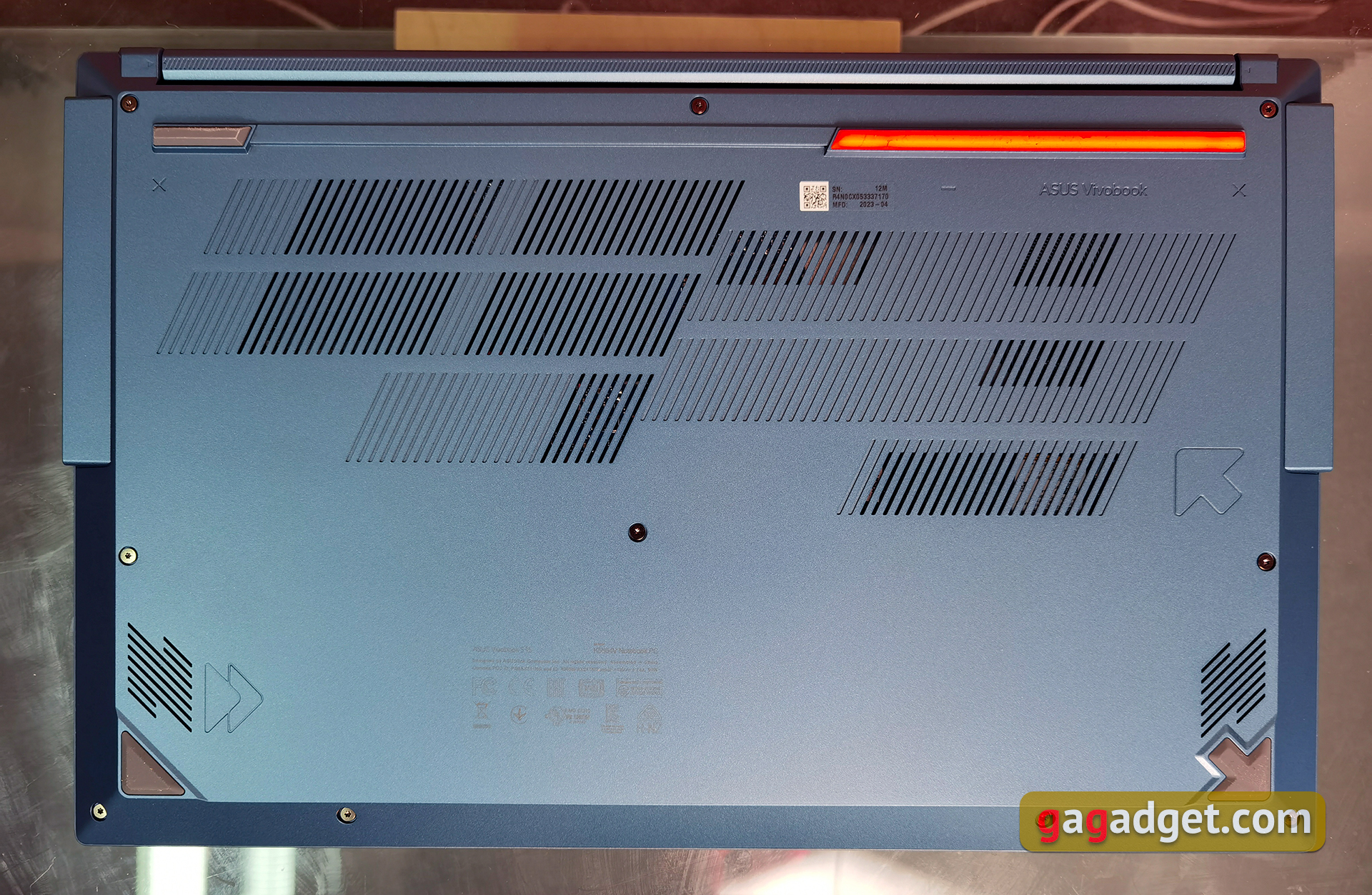
ASUS Vivobook S 15 OLED looks stylish, with bright orange accents adding some originality. Despite the use of plastic, the case is quite sturdy, although the working panel bends slightly. The laptop meets the military requirements of the US MIL-STD-810H standard, so it should be durable. The laptop also uses the ASUS Antimicrobial Guard coating. The company claims that it inhibits the growth of bacteria by 99 for at least three years.
How comfortable is the ASUS Vivobook S 15 OLED?

ASUS uses a hinge design in many models (mostly ultraportables) that slightly raises the back of the work surface. This improves the flow of cold air and places the keyboard at a slight angle to the horizontal plane. In Vivobook S 15 OLED, a similar effect is achieved due to the higher rear legs. The hinge is not the most convenient: you can't open the laptop with one hand, you have to hold the working surface. The display is fixed quite well, although it trembles a little if you hit it. The maximum opening angle is 180°.

ASUS Vivobook S 15 OLED uses a standard keyboard layout with an additional number pad. It can be useful for those who work a lot in Excel or use it to enter special characters. The number pad is not separated from the main pad. Both Shift and Enter are long. The arrow block and the top row of function buttons are smaller. The row ends with the power button, which has a built-in fingerprint scanner. The layout is quite comfortable, although the arrow block would be a bit larger.
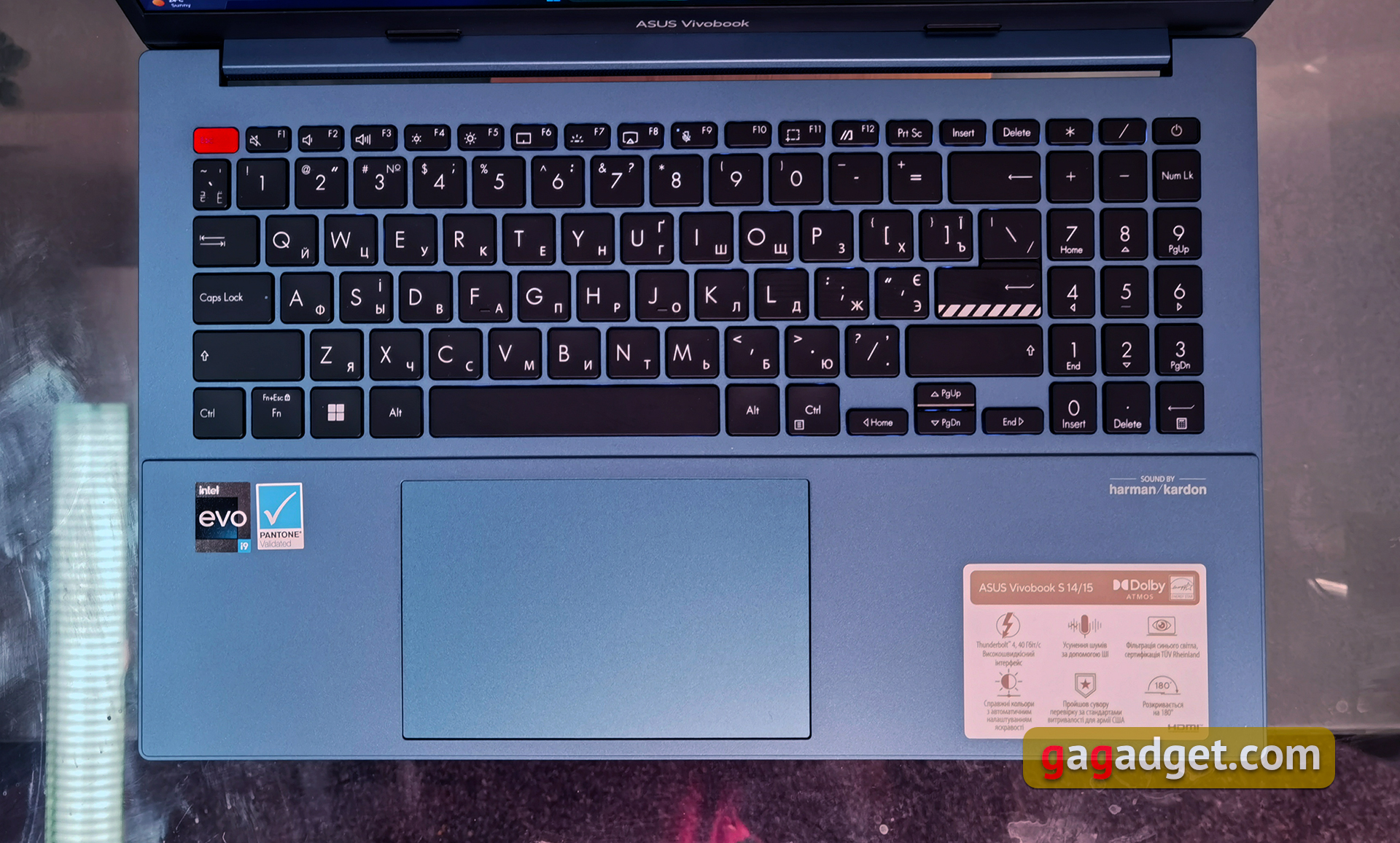
The ErgoSense keyboard has a key spacing of 19.05 mm. They are slightly concave by 0.2 mm and have a full travel of 1.4 mm. It is quite comfortable to use. There is a white backlight with three levels of brightness. In addition to the orange Esc button, the Enter key is marked with diagonal white stripes, which is also typical of the Vivobook line.
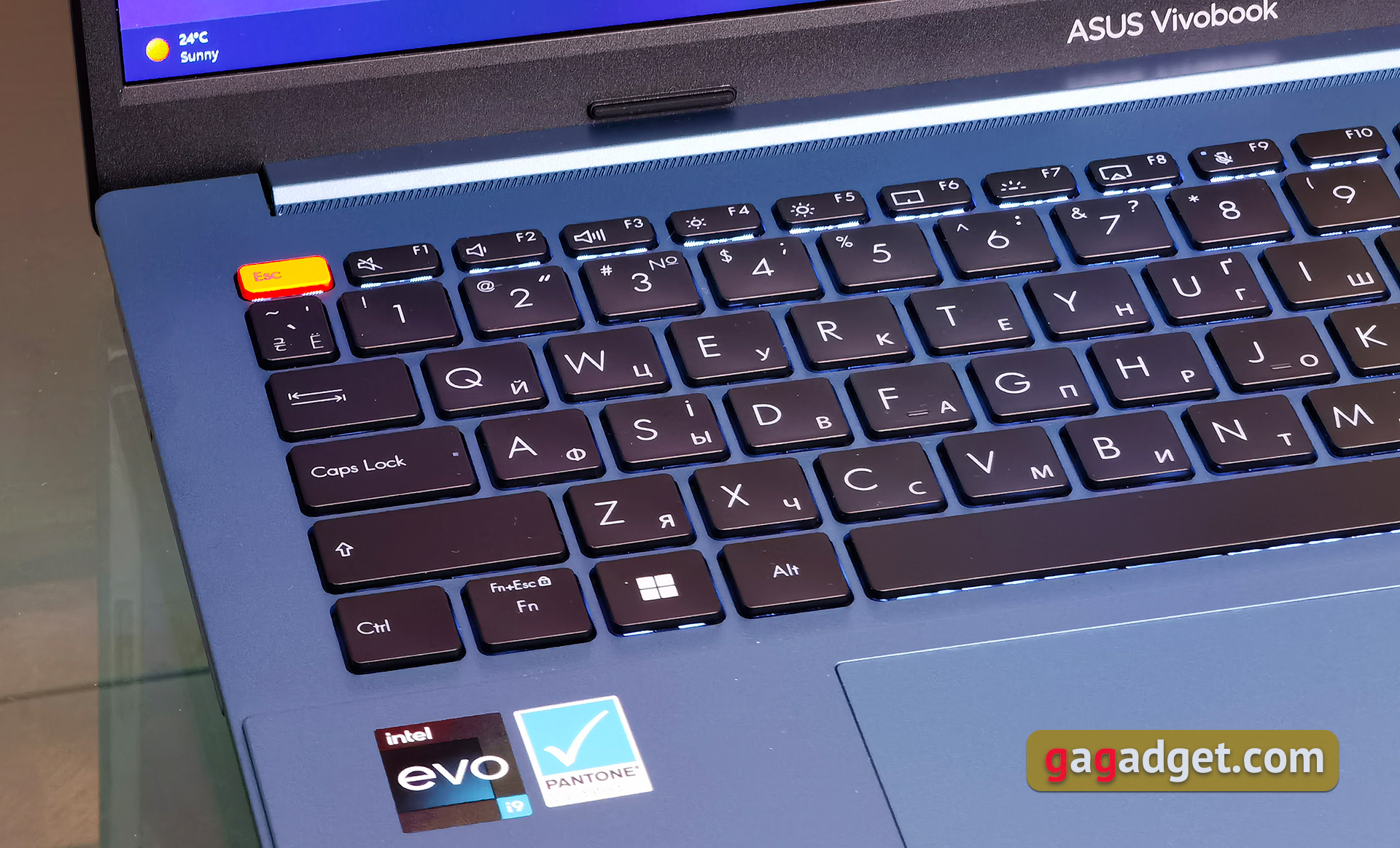



The touchpad, although not glass, has rather large dimensions of 129.7x82.1 mm, a pleasant hydrophobic coating and good sensitivity. There were no complaints about its performance, it is quite enough to work with documents and a browser.

How good is the screen?
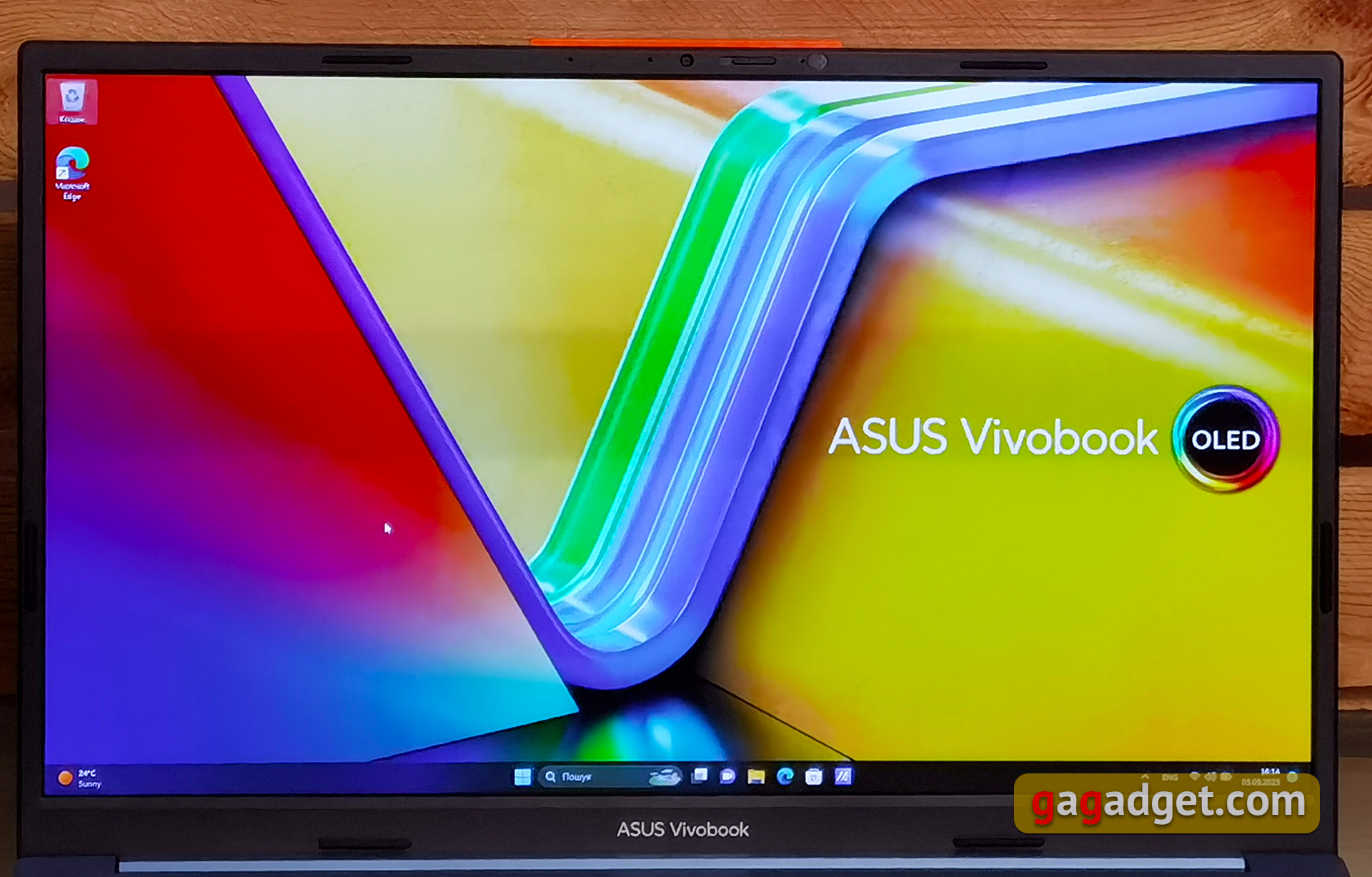
The laptop is equipped with a 15.6-inch display. It uses an OLED panel with Full HD (1920x1080) resolution, a standard 16:9 aspect ratio, a 60Hz refresh rate, and a peak HDR brightness of 600 cd/m². The pixel response time is 0.2ms and the DCI-P3 colour gamut is 100%. There is VESA Display HDR True Black 600 and PANTONE Validated certification. The screen is said to filter out up to 70% of harmful blue light. The coating is glossy, although it doesn't glare as much as touchscreen models with glass. The MyAsus app has tools to extend the life of the OLED panel: screen saver, pixel shift, taskbar hiding, taskbar transparency, darkening inactive windows, and DC Dimming (flicker elimination). There are Splendid colour display modes and colour temperature settings.
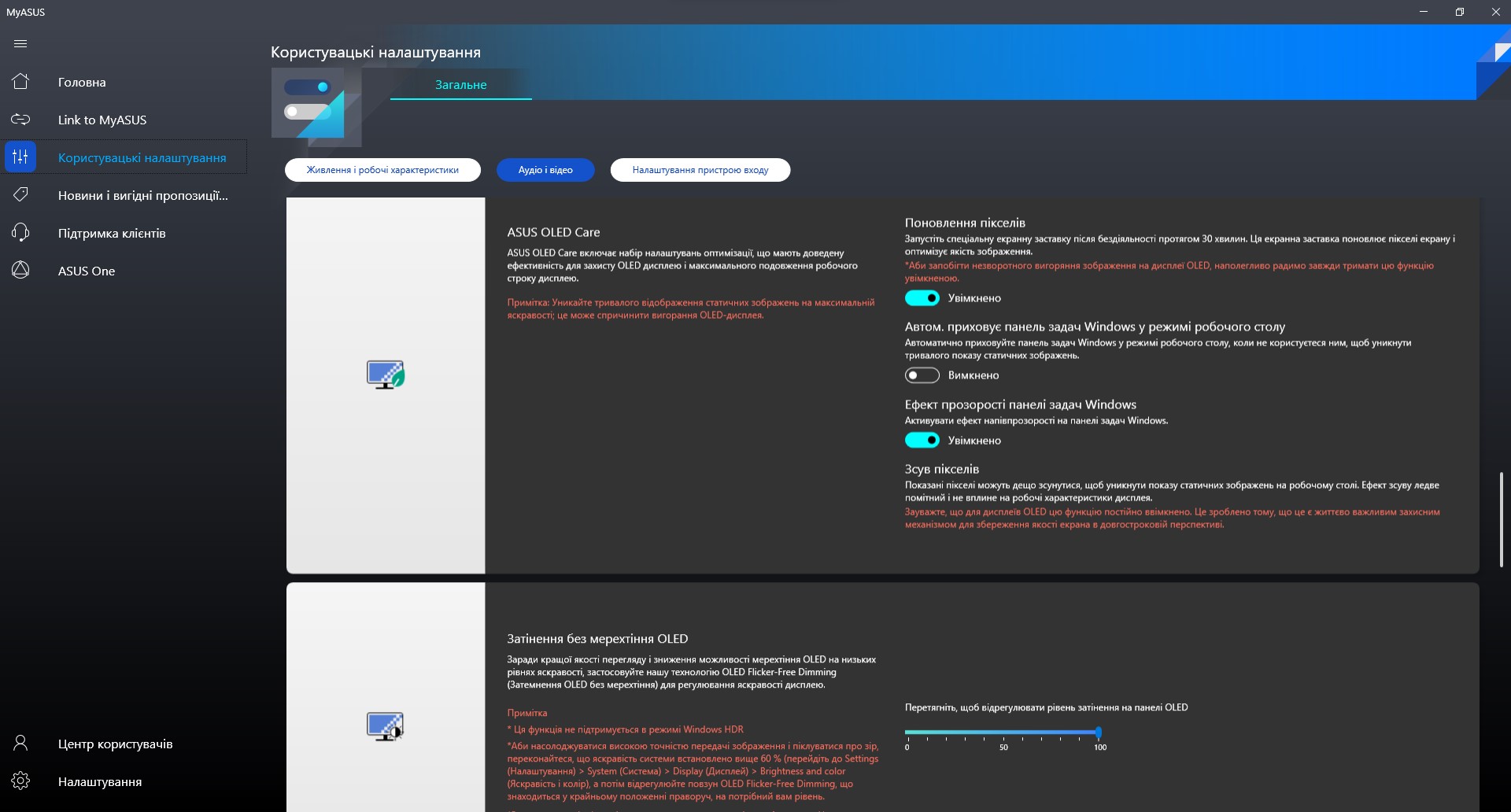
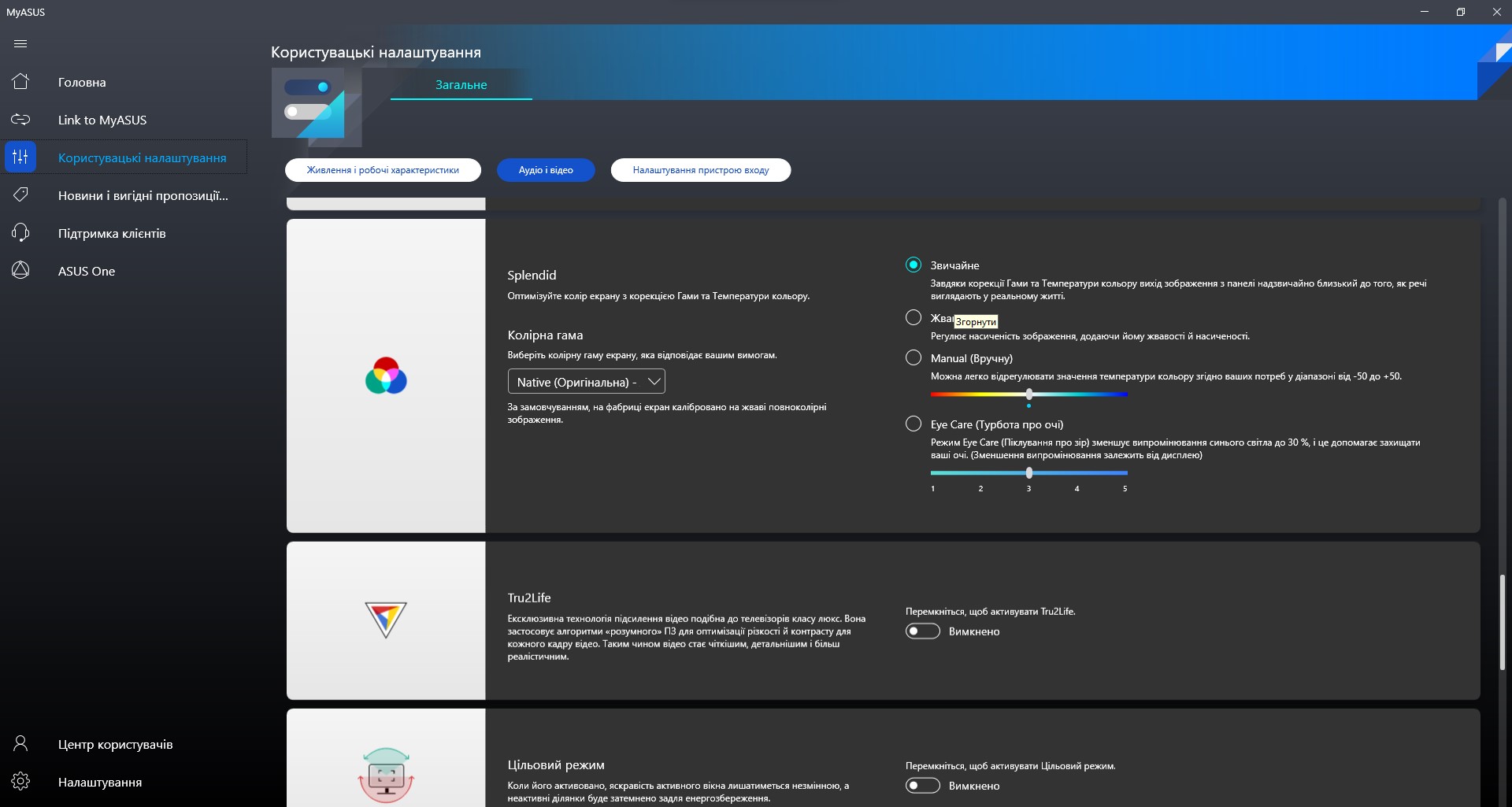


The maximum brightness in manual mode is 373,813 cd/m2. The colour gamut is much wider than sRGB, the colour reproduction is quite accurate, and the deviation to cold shades is minimal.
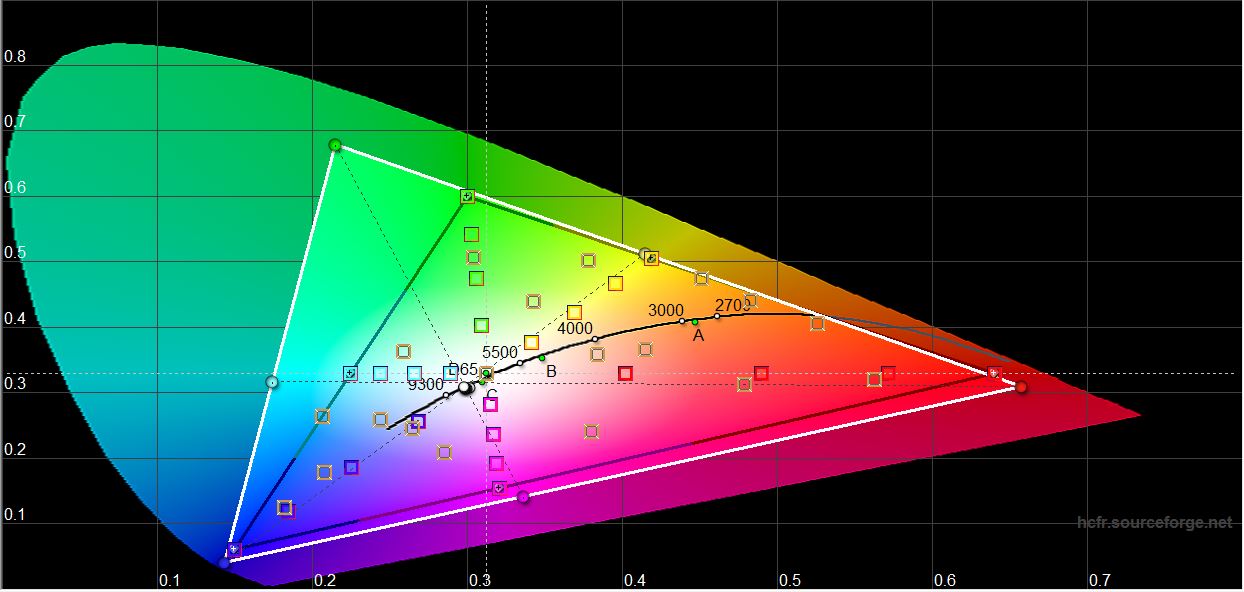


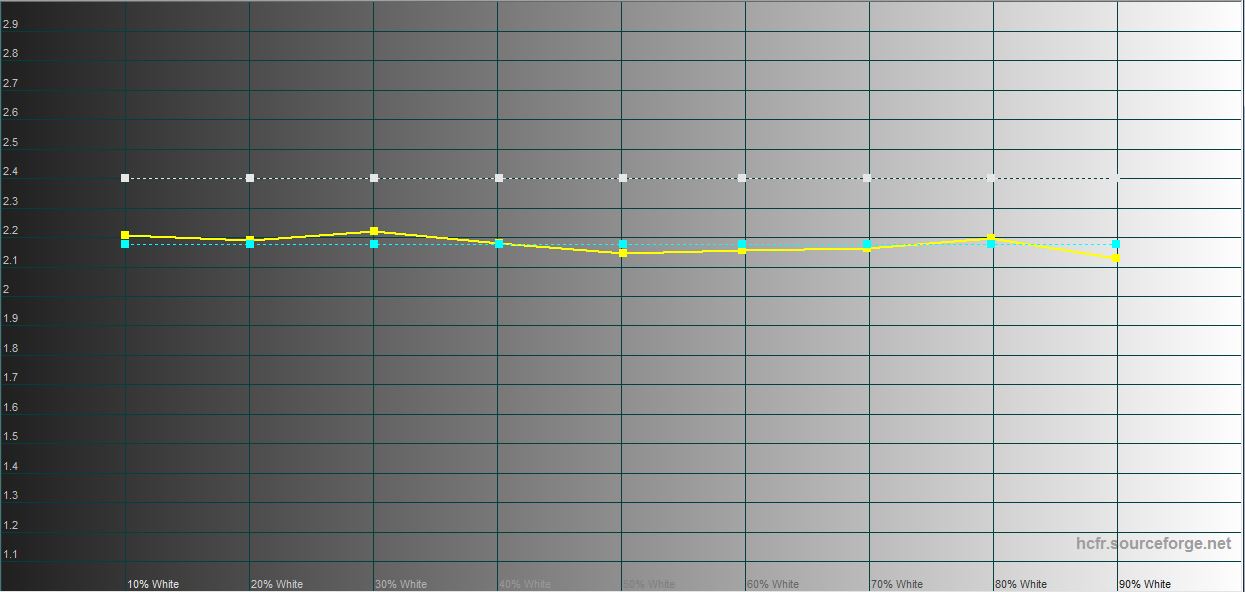






What about performance and battery life?
ASUS Vivobook S 15 OLED is powered by the latest 13th generation Intel Raptor Lake H-series processors. In our configuration, we have the top-of-the-line Intel Core i9-13900H. It is manufactured using the Intel 7 process and includes 14 cores. 6 productive cores with a clock speed of 2.6 to 5.4 GHz and 8 energy-efficient cores with a clock speed of 1.9 to 4.1 GHz. Up to 20 threads of computing are supported, and the cache is 24 MB. The TDP level is 45 watts. There is integrated Intel Iris Xe graphics with a frequency of up to 1.5 GHz. But in addition to the integrated solution, there is also a discrete graphics card. Namely, the Intel Arc A350M. Intel's graphics cards are still hardly widespread, so we were particularly interested in getting to know the capabilities of Intel Arc. The company claims that the base model of the line (which is the Intel Arc A350M) provides twice the performance of integrated solutions. The video card is based on the 6nm Intel ACM-G11 graphics processor. It includes 96 universal cores, 48 texture modules, 6 RT cores, and 96 tensor cores. The amount of video memory is 4 GB of GDDR6. The base frequency is 1150 MHz, in Boost mode - up to 2200 MHz. Of course, this is not a gaming graphics card that can compete with current NVIDIA solutions, but its performance is enough to play not the most demanding modern games. The amount of RAM is 16 GB LPDDR5-4800, which works in dual-channel mode. There is no upgrade, as well as versions with 32 GB of RAM. Wireless interfaces: Bluetooth 5.2 and fast Wi-Fi 6E (802.11ax) (Dual band) 2x2.

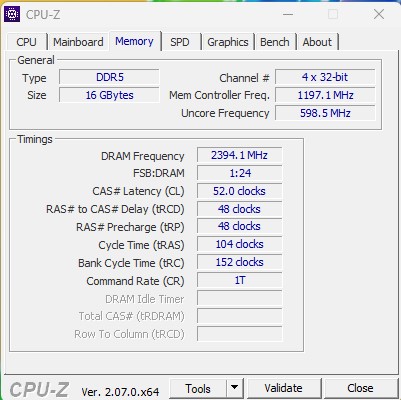
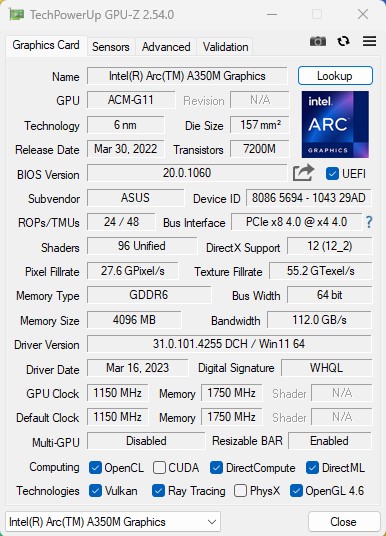
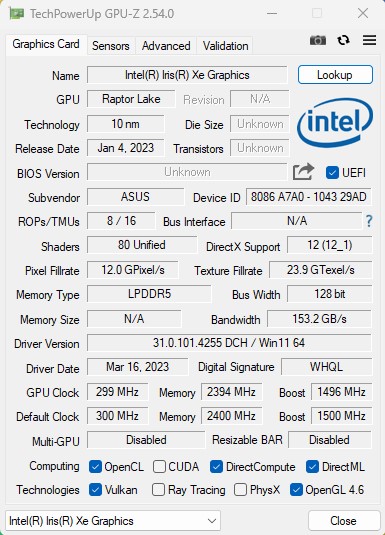
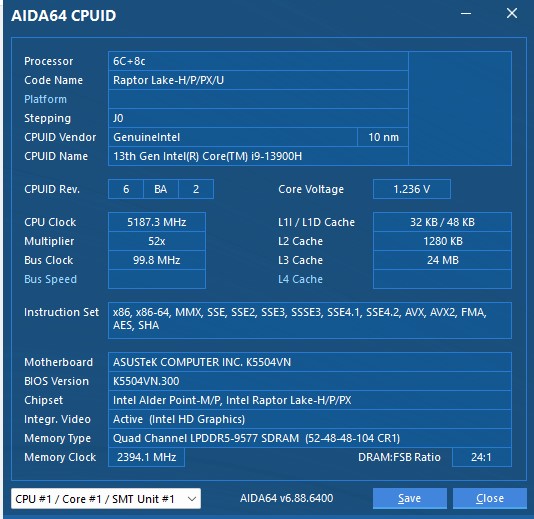
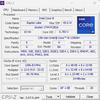



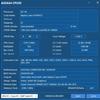
The laptop uses a very powerful Intel Core i9 processor, albeit not with the highest TDP. But it demonstrates very high performance in the relevant synthetic tests. Intel Arc A350M graphics are indeed significantly more powerful than integrated solutions. In general, the laptop's performance is sufficient for heavy tasks, as well as photo and video processing. But for heavy 3D editing, you should still look for something with more powerful graphics.
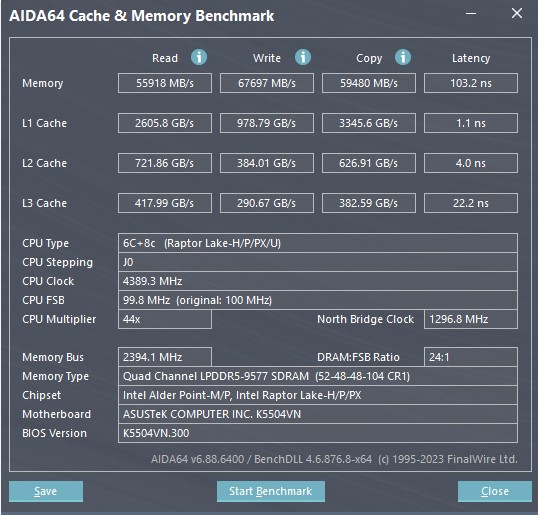

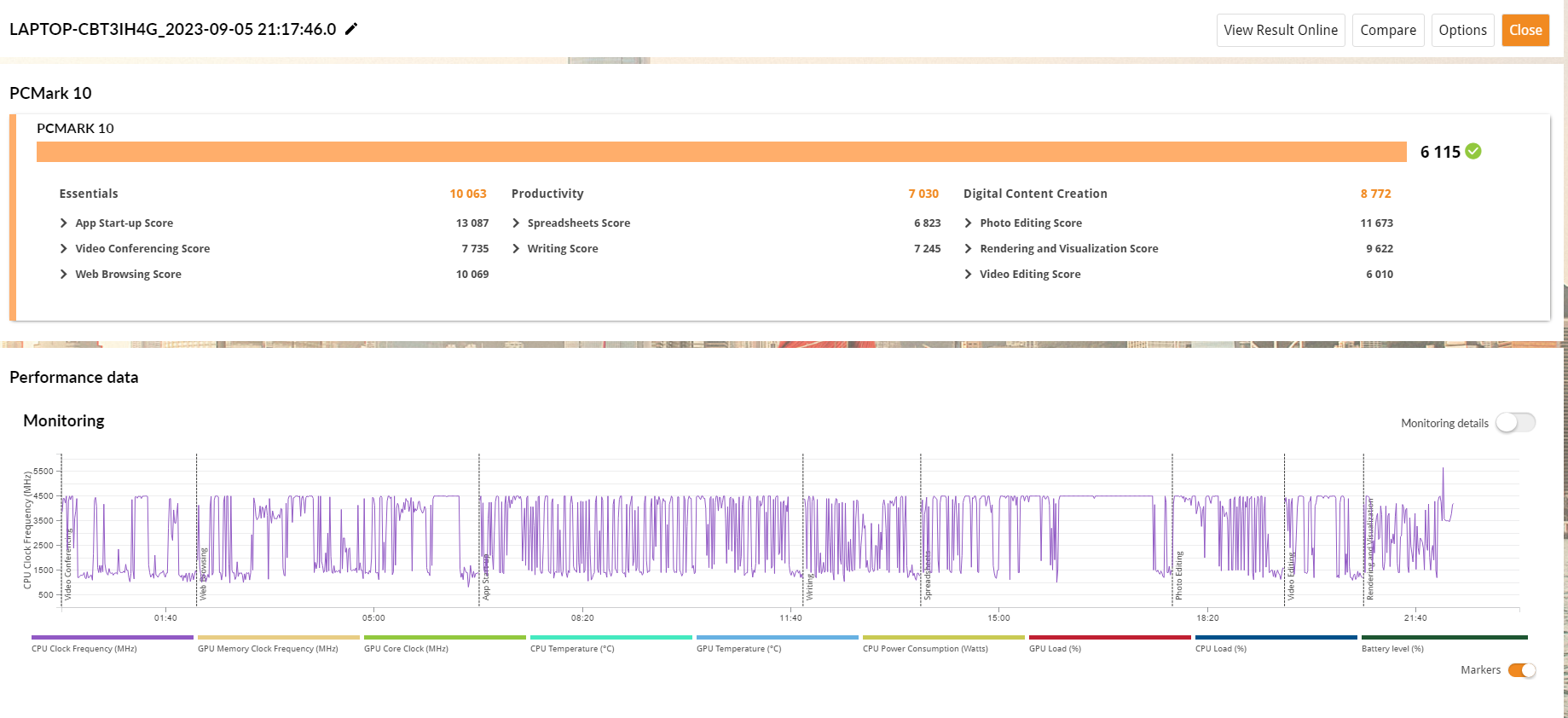
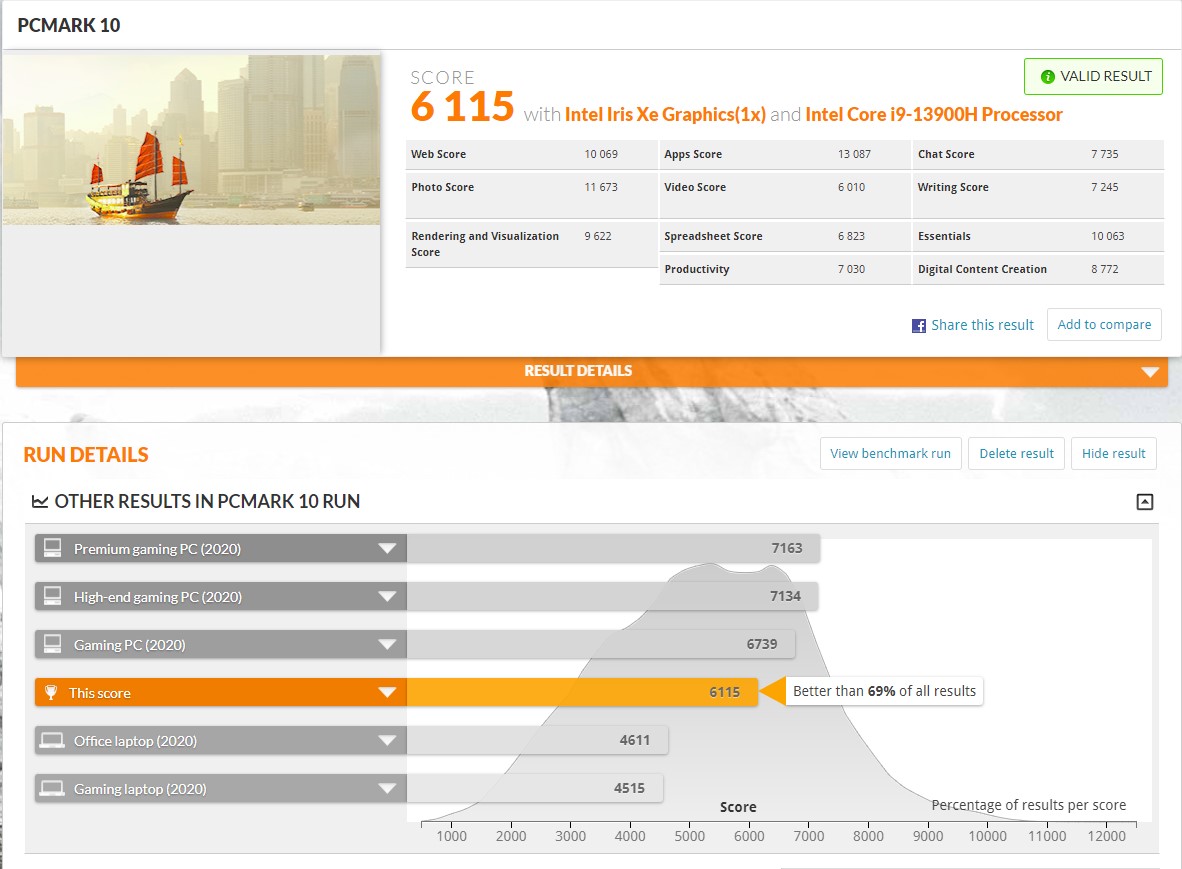
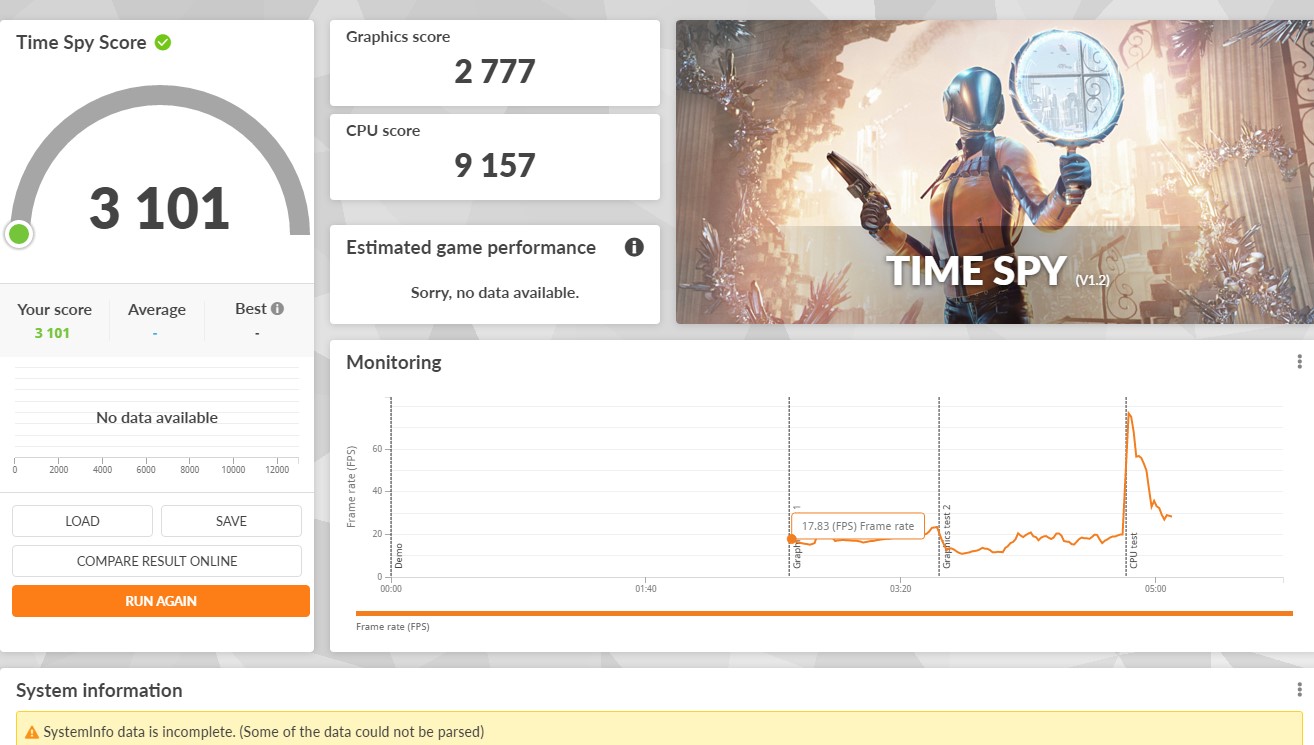
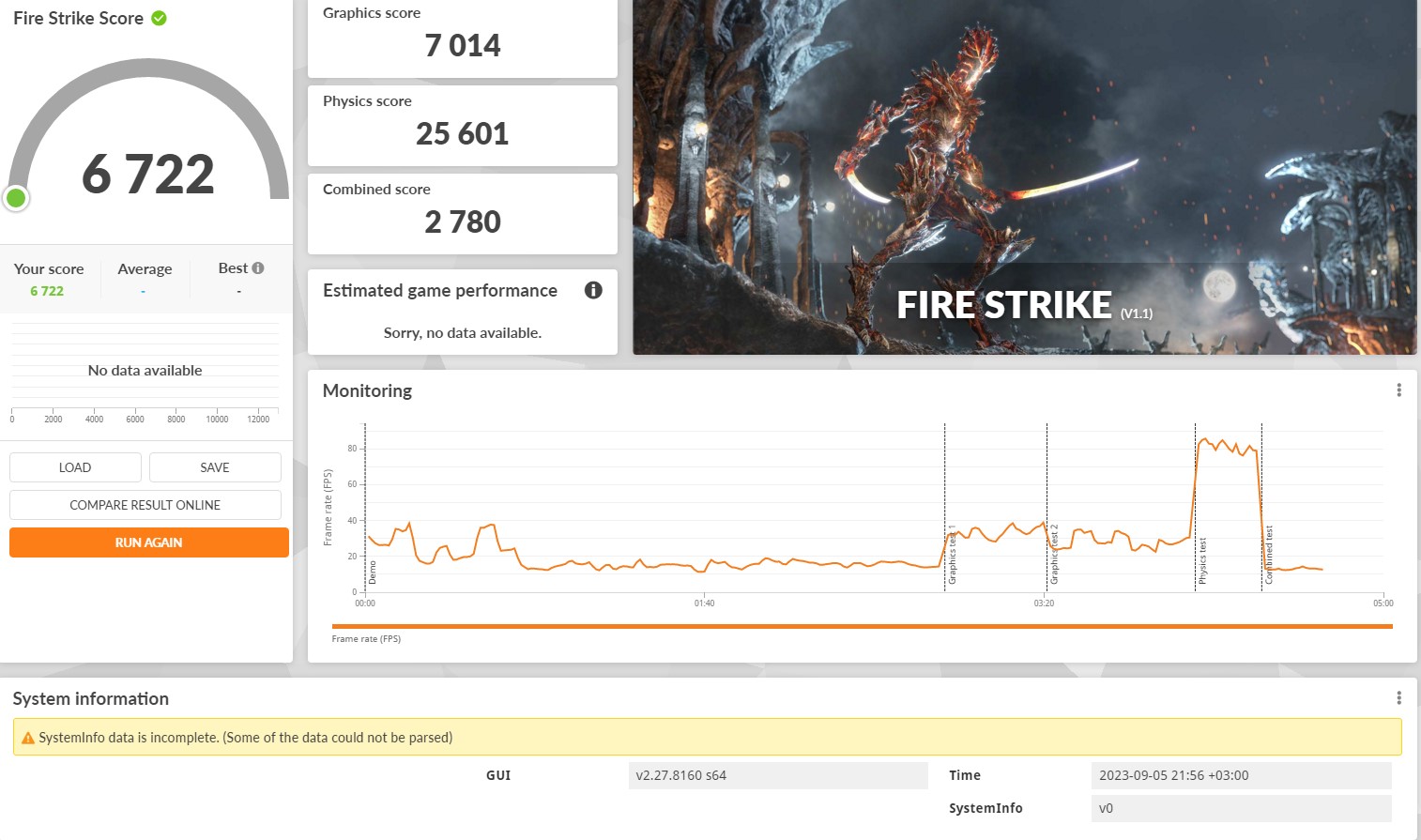
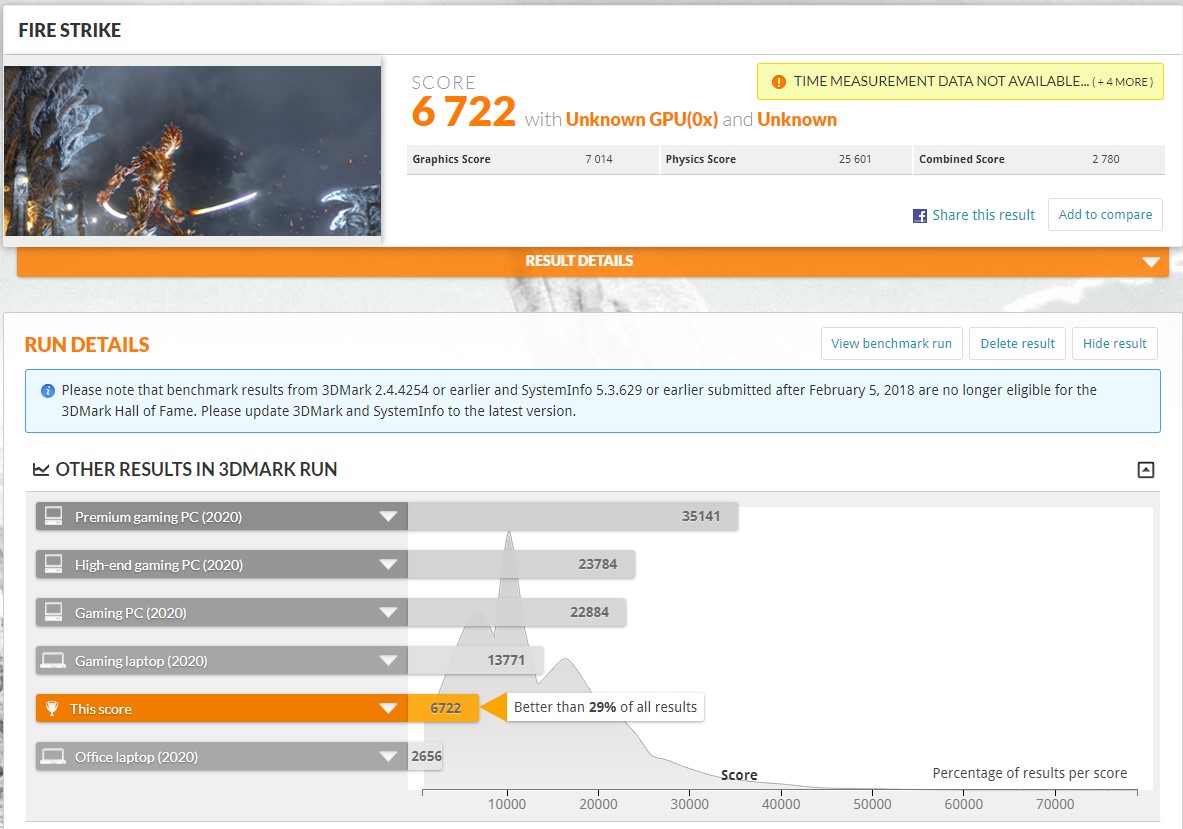
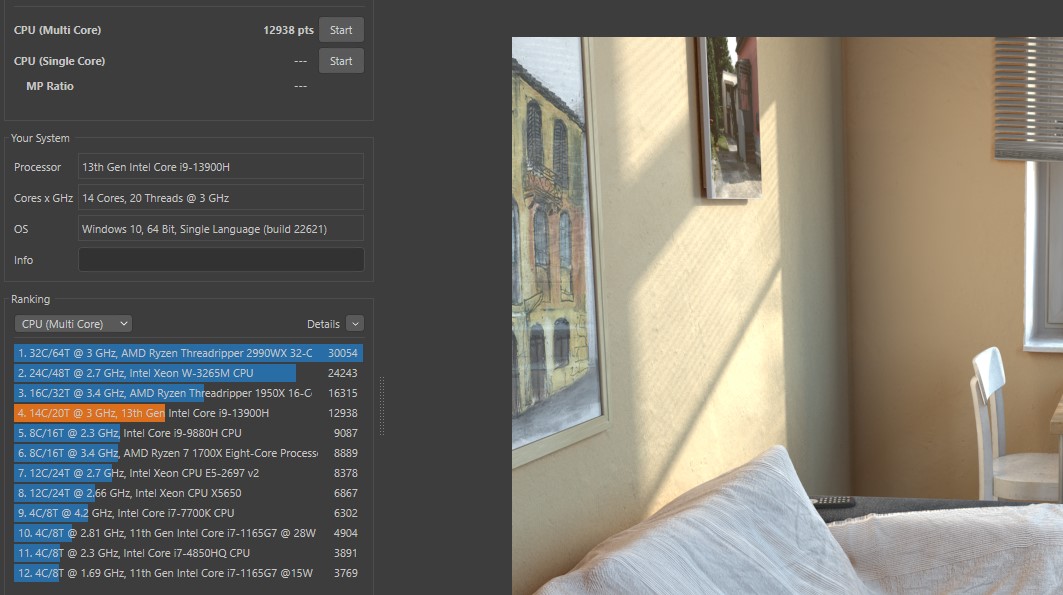

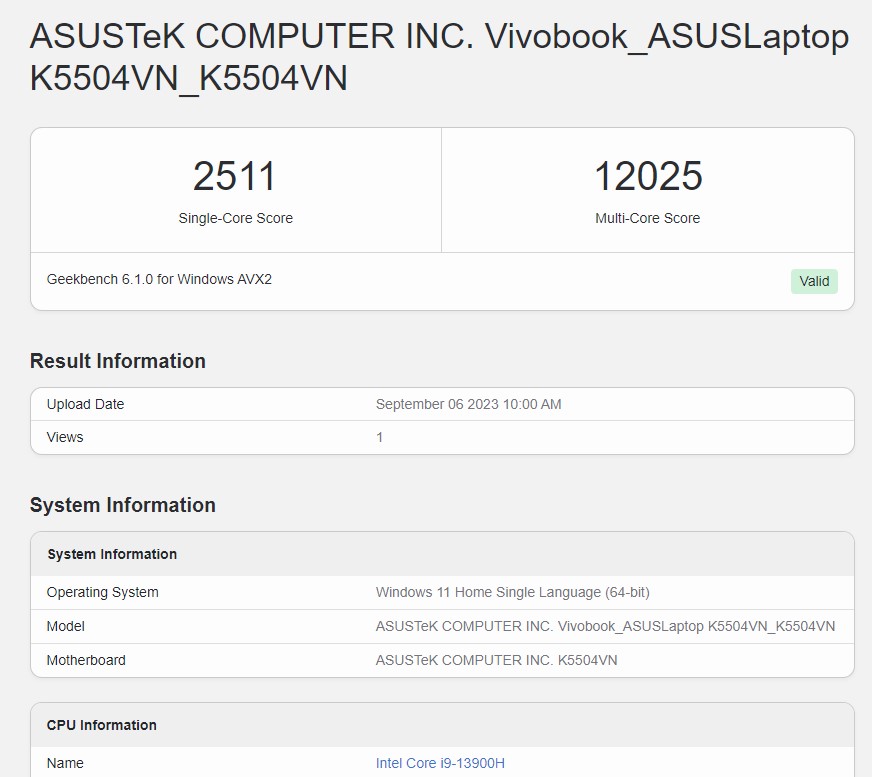

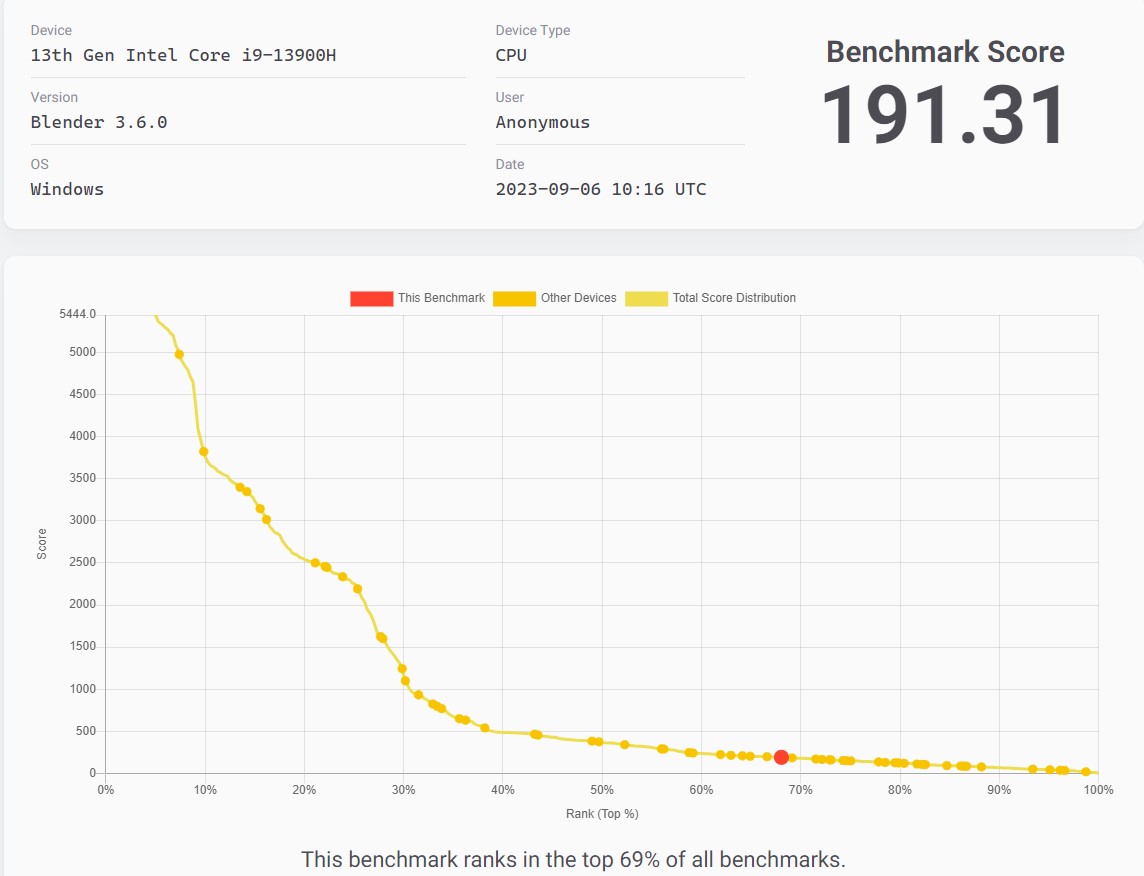

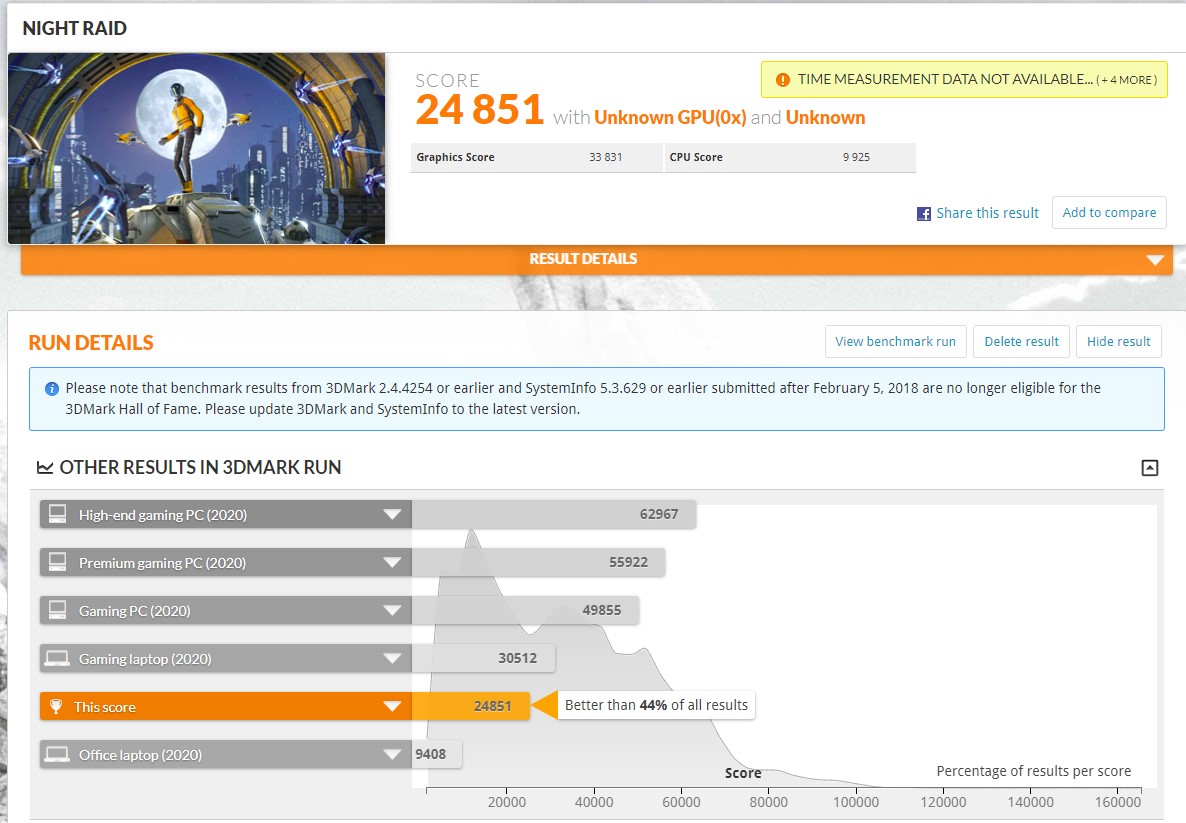


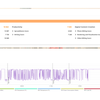











The ASUS IceCool cooling system includes two heatpipes with a diameter of 8 mm and 6 mm, as well as just one IceBlade fan with 87 blades. Usually, laptops with such powerful components use two fans. But, as it turned out, the ASUS Vivobook S 15 OLED cooler copes with its task. The AIDA64 stress test showed that the temperature of the components remains at around 88° during prolonged use. At the same time, the system operates stably, the processor does not throttle. The upper part of the working surface becomes warm, although this does not affect the use: the keyboard remains cold. But the noise level under such a load is quite high.

The drive is a Micron M.2 SSD, model 2450 (MTFDKBA1T0TFK) with a capacity of 1 TB and a PCIe 4.0 interface.

The read speed is about 3600 MB/s and the write speed is 3450 MB/s. These are no longer record-breaking figures, but they are quite enough for comfortable work, fast launch of the operating system and applications.
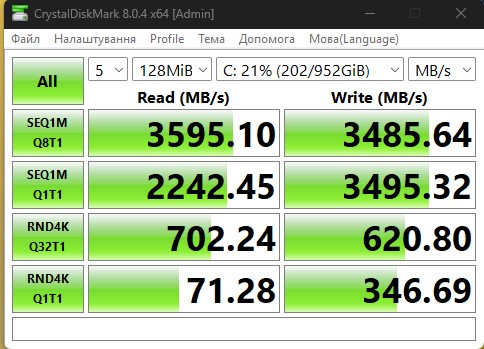
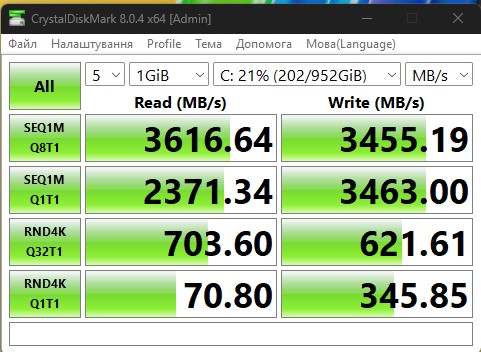
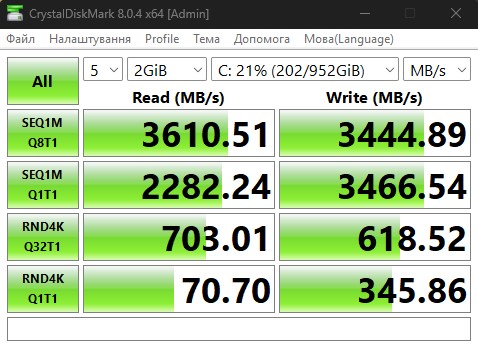
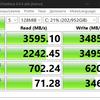


You can play modern games on the ASUS Vivobook S 15 OLED, but the settings should be set to medium in most cases.
- Death Stranding. Medium settings: 40-45 FPS.
- Gamedec. High settings: about 50 FPS.
- Gears Tactics. High settings: 30-45 FPS.
- The Ascent. High settings, all ray tracing options disabled: about 35-40 FPS.






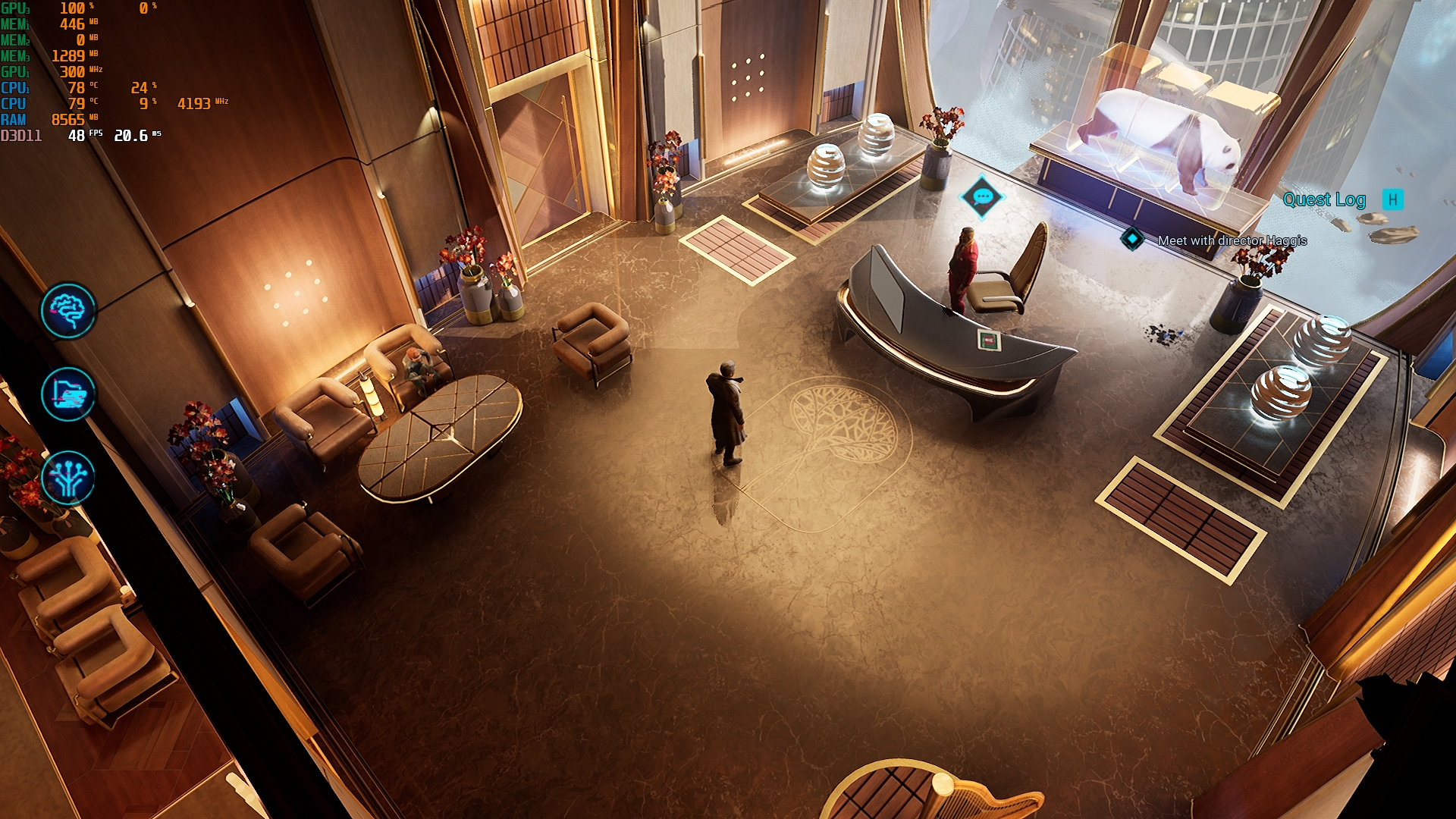




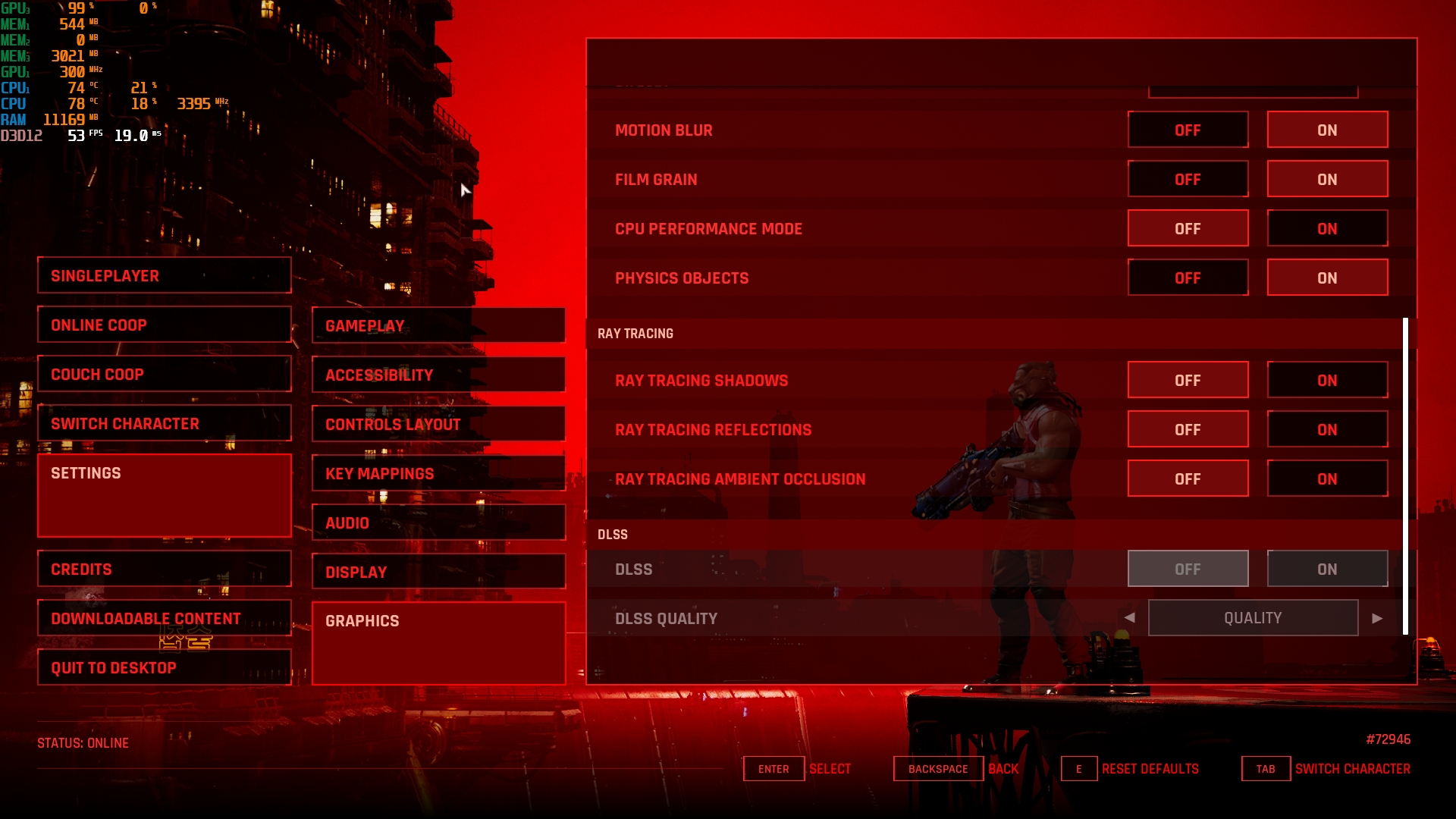
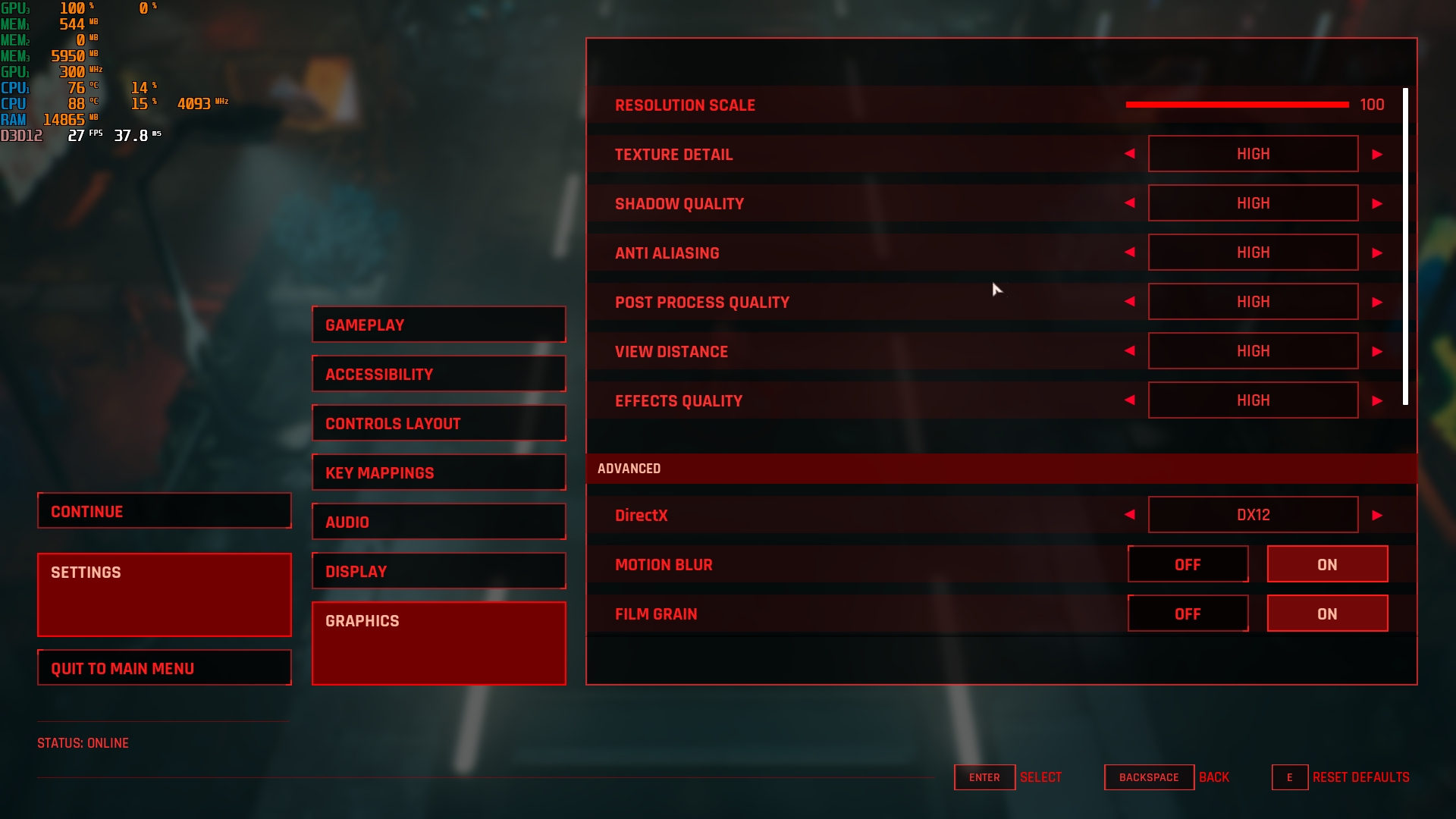























ASUS Vivobook S 15 OLED laptops come with two battery options. 70 and 75 Wh. We had the smaller option. But it also provides the laptop with a very good level of autonomy. In working mode: 50% screen brightness, constant Wi-Fi connection, a browser with a bunch of tabs, document work and a little Photoshop can get you just over 9 hours, which is an excellent figure for a laptop of this kind. Fast charging is supported: 60% in 49 minutes is promised. It takes about 2 hours to fully charge.
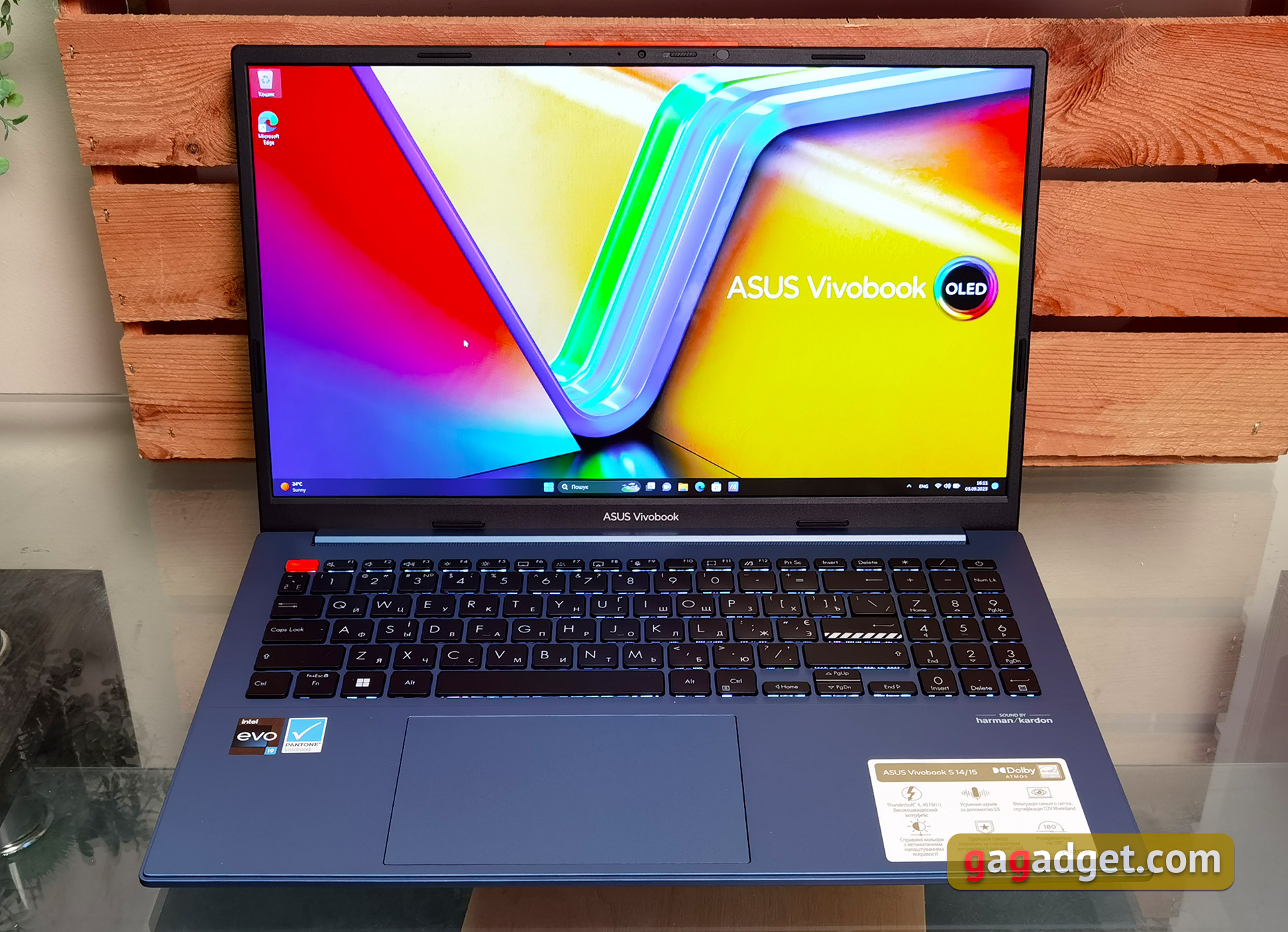
The laptop's stereo speakers are located on the bottom of the case and point downwards at a right angle, which usually does not have a very good effect on sound quality. But in this case, everything turned out to be quite good. The speakers are loud and quite good in terms of playback quality. There are even hints of low frequencies.
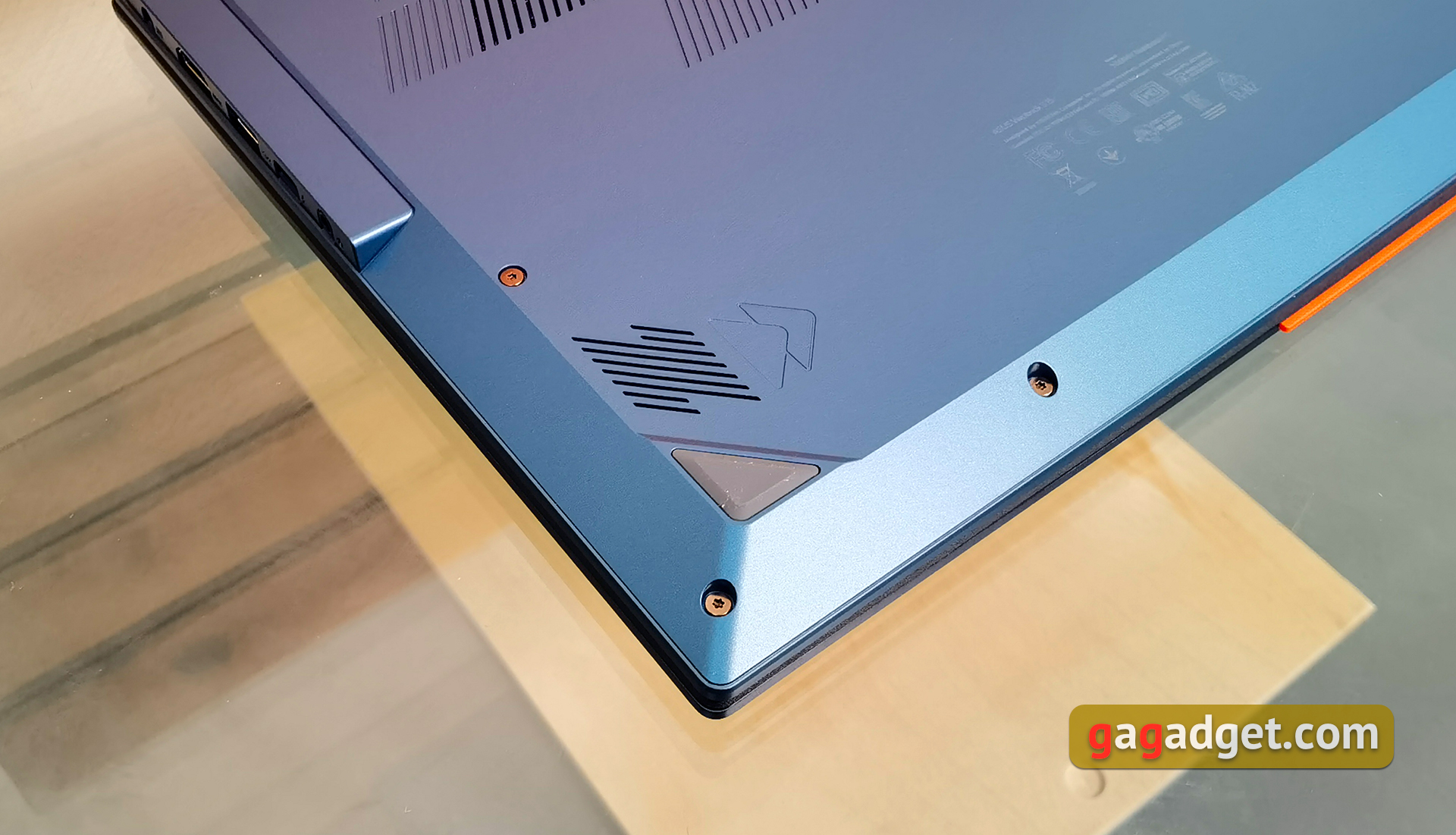
The pre-installed software in the laptop is the familiar MyASUS application. It is responsible for all the basic settings (including performance, screen, noise reduction, etc.), diagnostics and system updates.

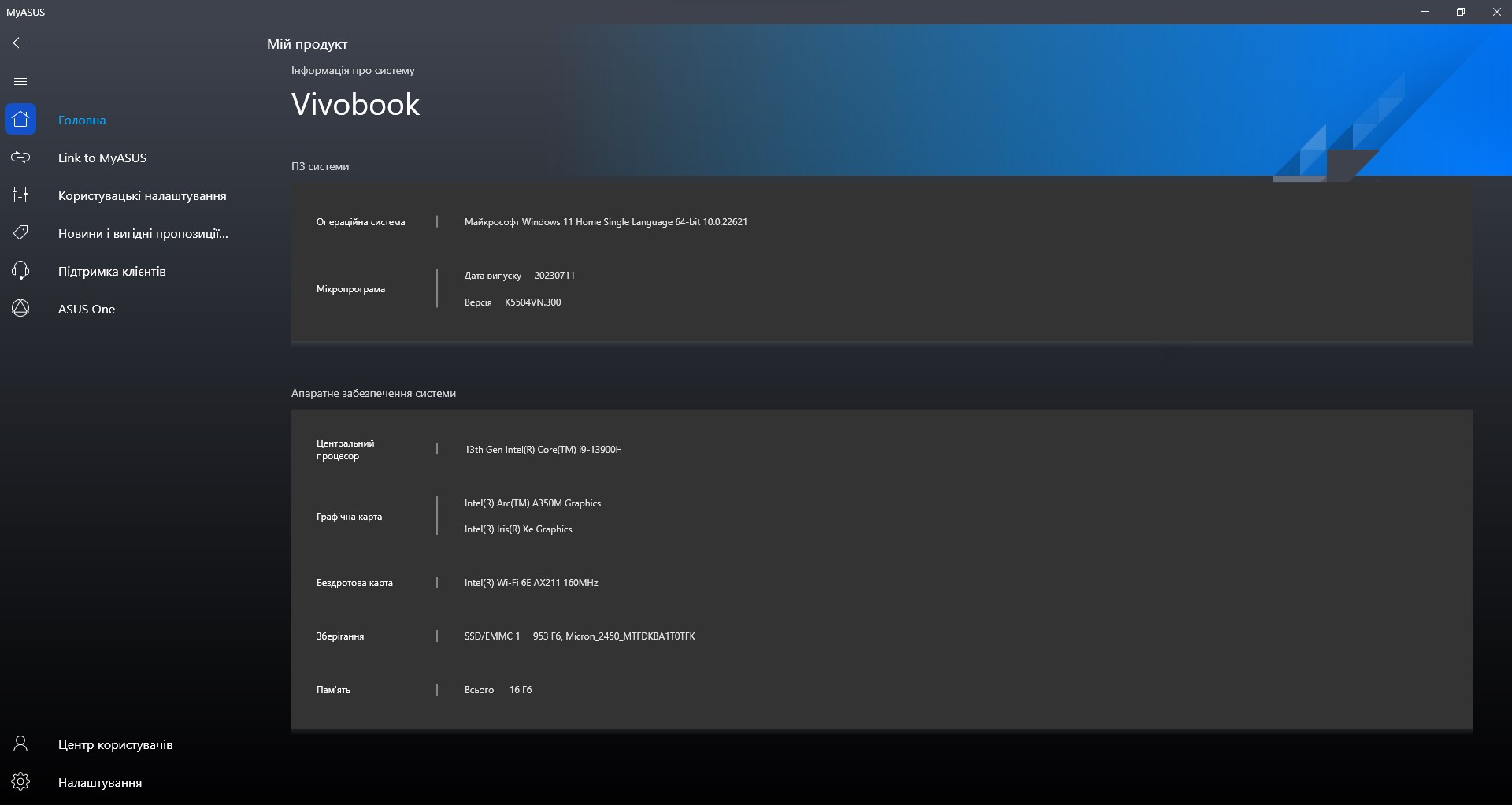
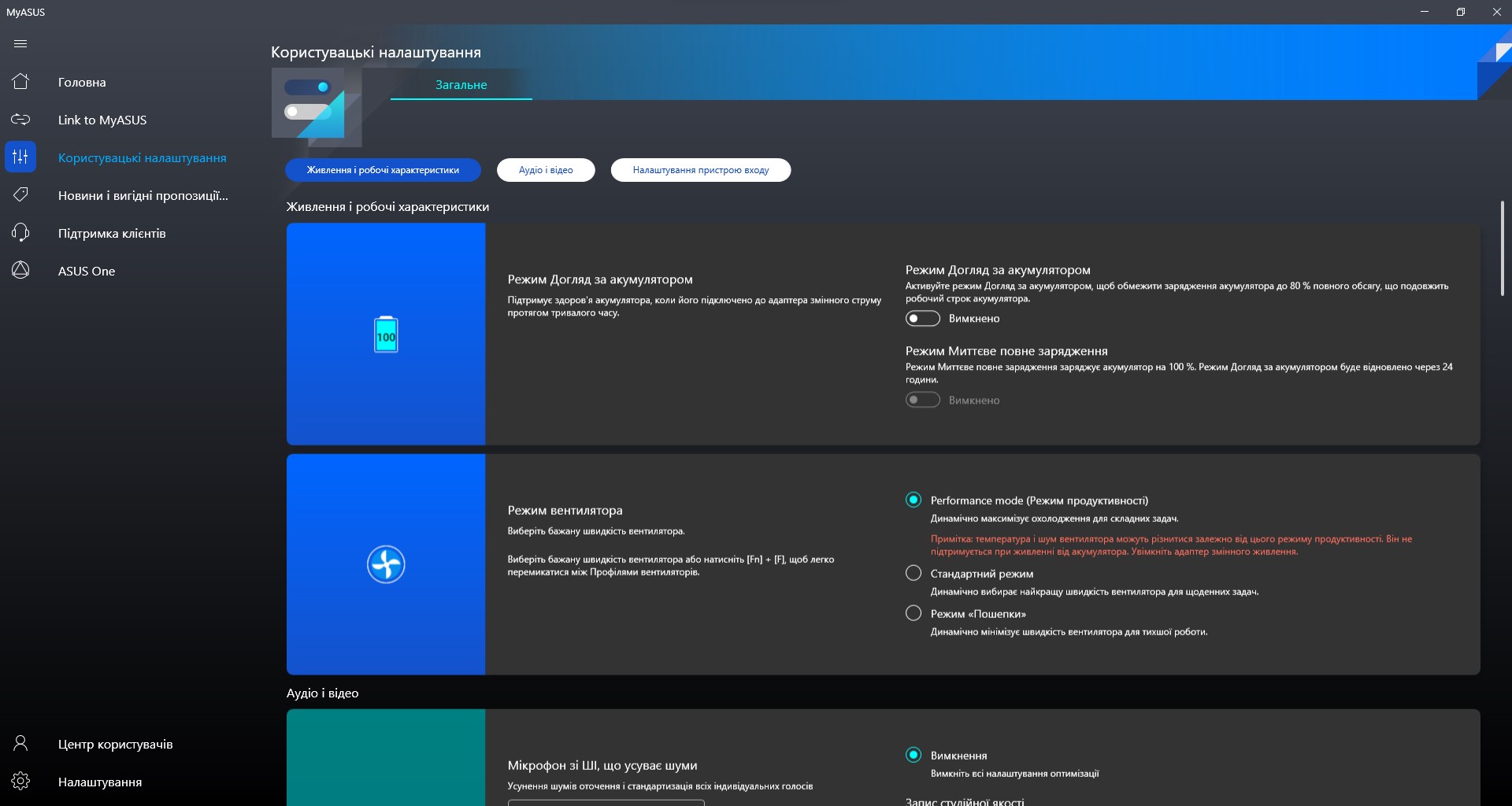
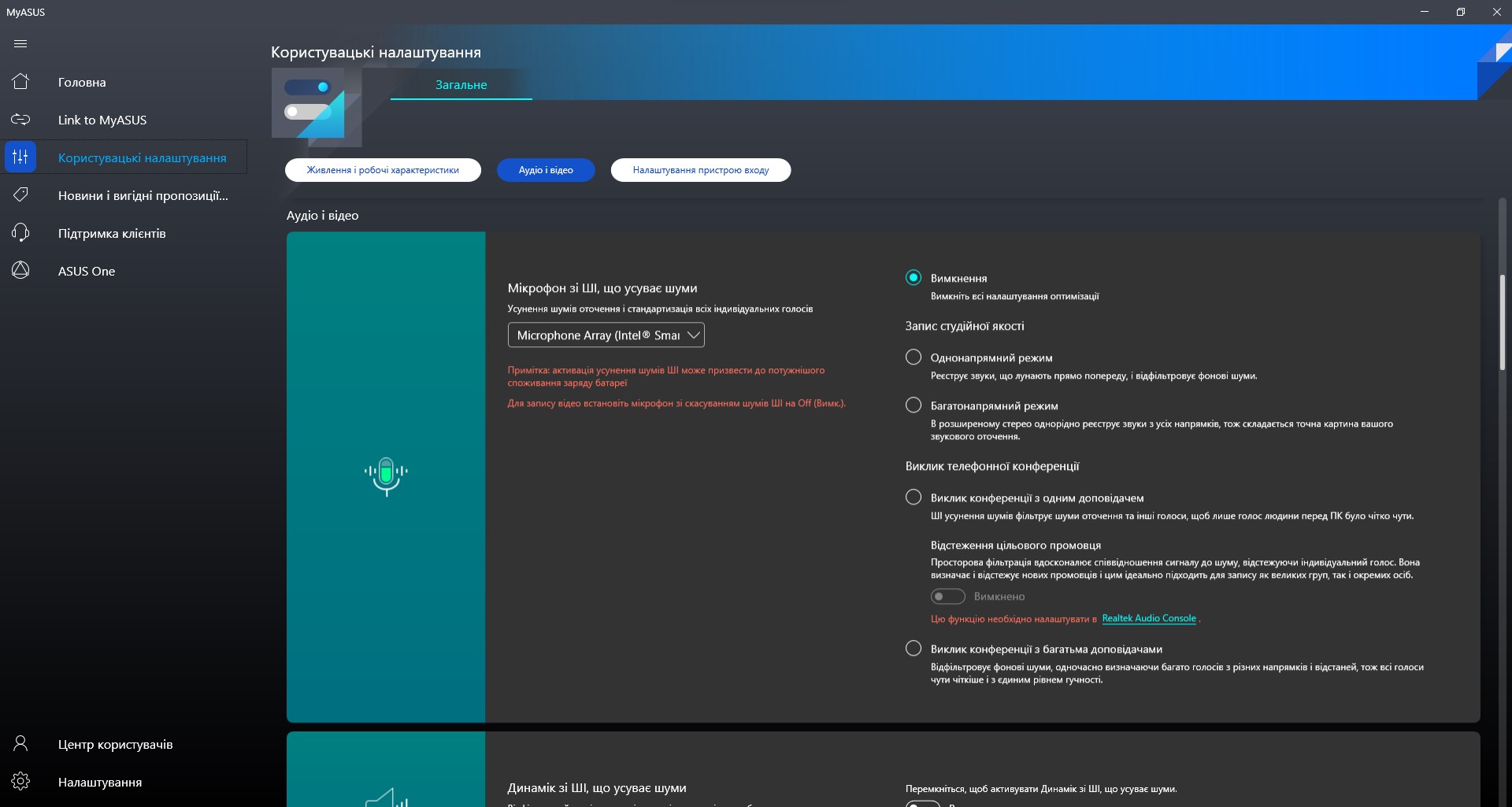
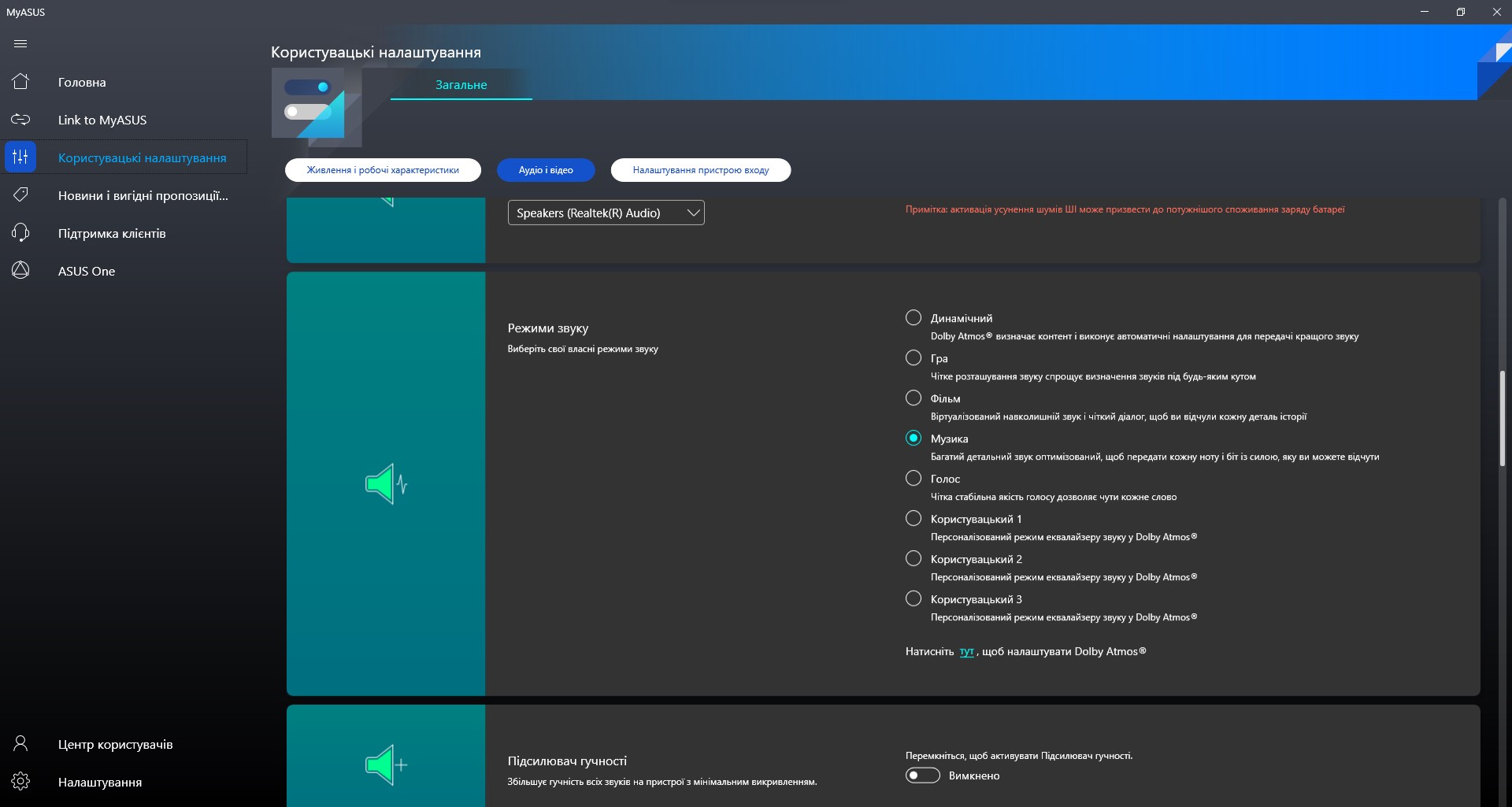


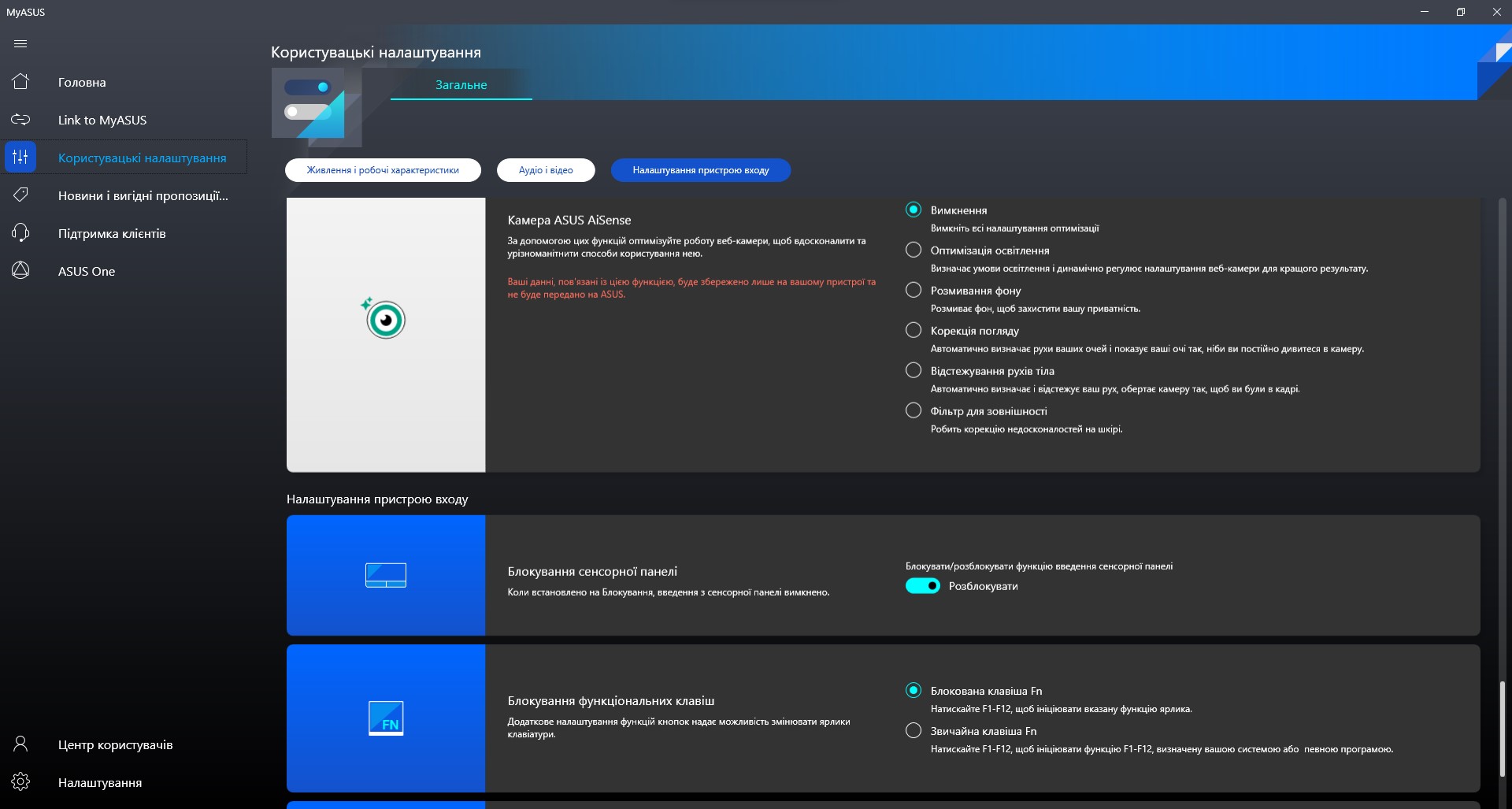










GlideX is an app that allows you to easily connect your smartphone to your laptop, use it as an additional display, and transfer data quickly.

And ScreenXpert with quick access to the clipboard, a screenshot tool, and easy workspace setup with multiple applications on the screen.

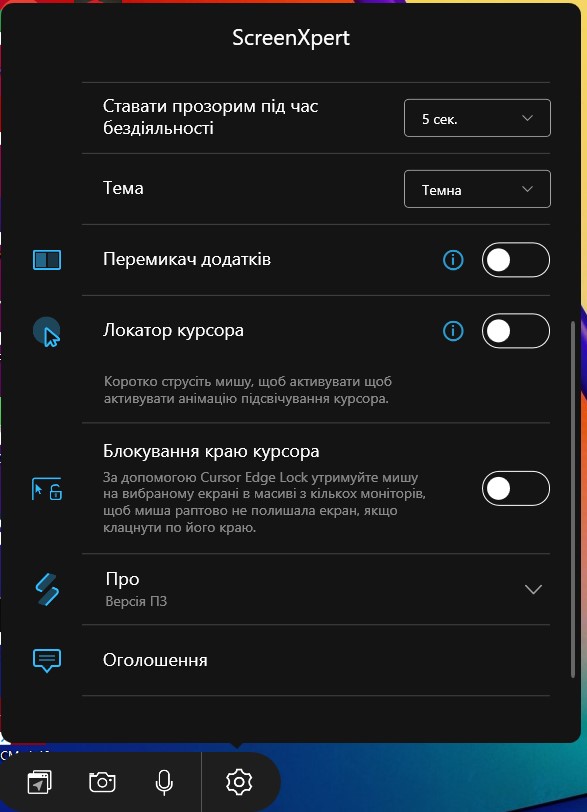


- High performance
- Bright OLED display with high-quality picture
- Efficient cooling system
- Comfortable keyboard and touchpad
- Excellent battery life
- Stylish and sturdy body that meets the MIL-STD-810H standard
Bottom line. Five things you need to know about ASUS Vivobook S 15 OLED.
- ASUS Vivobook S 15 OLED is equipped with a bright, high-quality 15.6-inch OLED display.
- It has a rugged case that meets the MIL-STD-810H standard.
- Inside is a powerful Intel Core H-series processor and Intel ARC discrete graphics.
- The cooling system allows the laptop to work stably without overheating.
- It works for a long time on a single charge.
| Specifications ASUS Vivobook S 15 OLED (K5504VN) | |
|---|---|
| Display. | 15.6 inches, 1920x1080 (16:9), OLED, 60 Hz |
| Dimensions | 359x229x17.9 mm |
| Weight | 1.7 kg |
| Operating system | Windows 11 Home 64bit |
| Processor. | Intel Core i9-13900H (2.6-5.4 GHz), 14 (6+8) cores, 20 threads, (Raptor Lake, Intel 7) |
| RAM | 16 GB LPDDR5-4800 |
| Graphics. | Intel Arc A350M, 4 GB GDDR6, integrated Intel Iris Xe |
| Storage device | SSD 1 TB M.2 PCIe 4.0 x4 |
| Communications. | Wi-Fi 6E (802.11ax) (Dual band) 2x2, Bluetooth 5.2 |
| Connectors | HDMI 1.4, USB-A 3.2 Gen 1, USB-A 2.0, 3.5 mm combined audio jack, Thunderbolt 4 (Power Delivery, Display Port) |
| Battery | 70 Wh |
For those who want to know more:
- Pride of Cybertron: review of the most powerful ultrabook-transformer ASUS ROG Flow X13 2023
- New corporate hope (episode 11): Lenovo ThinkPad X1 Carbon Gen 11 laptop review
- ASUS ROG Zephyrus M16 (2023) GU604 review: GeForce RTX 4090 in a slim body
- ASUS Zenbook S 13 OLED (UX5304V) review: the thinnest 13-inch laptop with OLED display
- ASUS Zenbook 14X OLED (UX3404) review: bright OLED display and brilliant power
